Nestled off the southern coast of South Korea, Jeju Island is a dream destination for nature enthusiasts, food lovers, and anyone seeking a mix of adventure and relaxation. Known for its breathtaking volcanic landscapes, serene beaches, and rich cultural heritage, Jeju is South Korea’s largest island and a must-visit spot for travelers. Whether you’re hiking Hallasan, savoring fresh seafood, or marveling at the traditions of the haenyeo (female free-divers), Jeju offers experiences that cater to every kind of traveler.
We spent five days immersing ourselves in Jeju’s unique charm and culture, and in this guide, we’ll share our highlights, practical tips, categorized expenses and a detailed daily itinerary to help you plan your own unforgettable trip. Although we only stayed 5 days, it could be a great option to stay long-term for nomads and it was surprisingly very affordable for an island destination.
Note: Some links below are affiliate links, meaning that if you click and purchase any of them, Nomad Numbers may receive a commission at no additional cost to you. For more information please review our disclaimer page.
Where is Jeju Island?
Jeju Island (often spelled “Jeeju”) is a beautiful island located in South Korea off the southern peninsula. It’s South Korea’s largest island and is known for its natural beauty, including volcanic landscapes, beaches, waterfalls, and Hallasan Mountain, which is a dormant volcano and also the highest peak in South Korea.
Jeju island was the first stop during our 2 month stay in South Korea and it was a wonderful introduction to the country.
Things to do on Jeju Island
Here are some must-see attractions and activities to enjoy during your visit:
- Climb Hallasan Mountain – Hike South Korea’s tallest peak and enjoy panoramic views of the island.
- Visit Seongsan Ilchulbong (Sunrise Peak) – Explore this volcanic crater and enjoy the stunning scenery.
- Discover the Haenyeo Culture – Watch traditional female divers in action and learn about their unique lifestyle.
- Explore Waterfalls and Coastal Wonders – Check out Cheonjiyeon, Cheonjeyeon, and Jusangjeollidae for stunning natural sights.
- Indulge in Jeju’s Food – Savor specialties like black pork barbecue, seafood stews, and abalone porridge.
- Stroll Through Tea Fields – Visit the O’Sulloc Tea Museum and enjoy the green tea plantations.
- Relax at the Beaches – From Hyeopjae to Jungmun, Jeju boasts gorgeous beaches for swimming and relaxation.
How many days do you need to visit Jeju Island?
We suggest atleast 5 days to visit Jeju Island as it gives you enough time to check out most sights. Of course, you could potentially stay an entire month on Jeju as the island is well developed. It has all of the infrastructure to live comfortably as a nomad or long-term traveler. If you are really short on time, a weekend trip is doable but you will be rushed.
Detailed 5 Day Jeju island Itinerary
Here is our detailed daily itinerary:
Day 1 – Settling down & car pick up
We arrived by air in the evening. We then picked up our car at the airport.
Pro-tip: We suggest to book car rental using Klook as you can get a car for as little as $20 a day!
We then went to grab food at 산과들 비빔밥 부대찌개 본점, a wonderful casual restaurant in Jeju City. This was our first experience with the Korean food and this place was quite a good introduction. We ordered a bibimbap (mixed rice) but the restaurant also offers budae jjigae (Korean army stew).
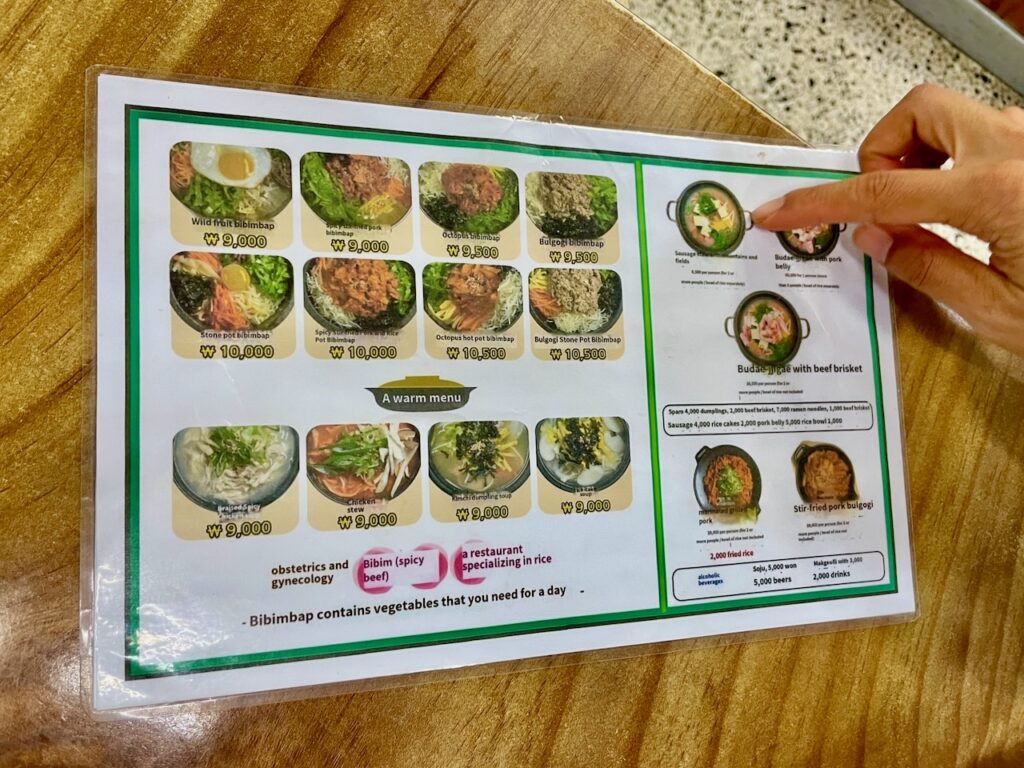
When then drove to our hotel. We used Marriott Points to book a 5 night / 6 days stay at the Marriott using 64,000 Marriott Points + 3 Free Night Awards (169,000 Marriott Points total).
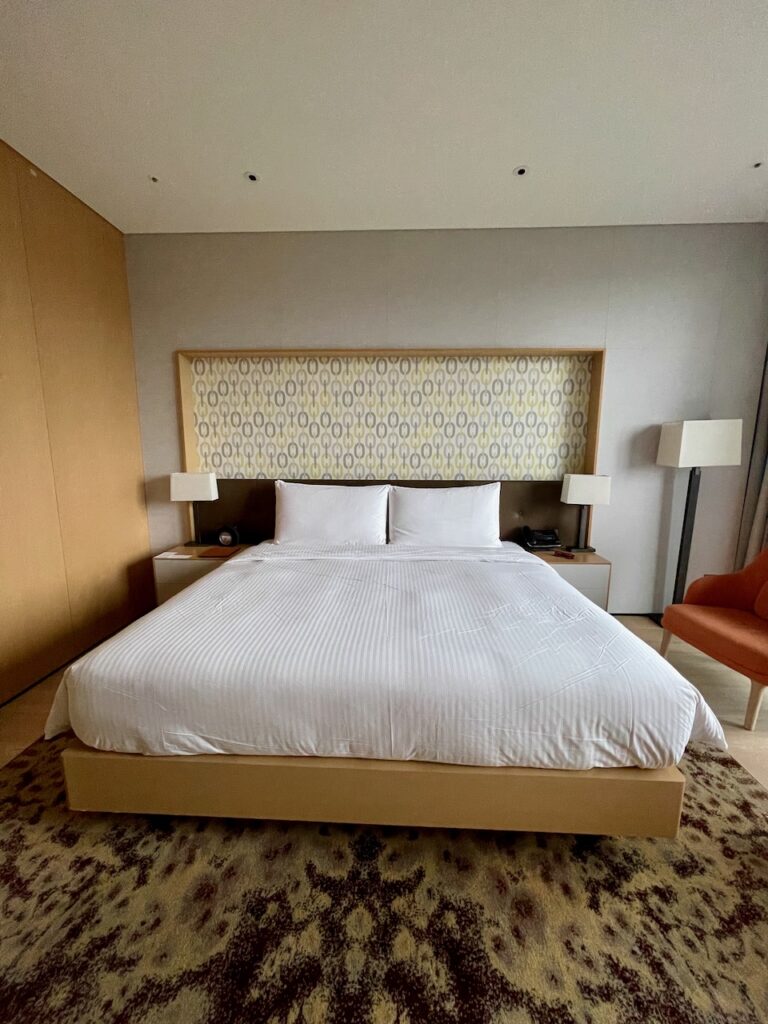
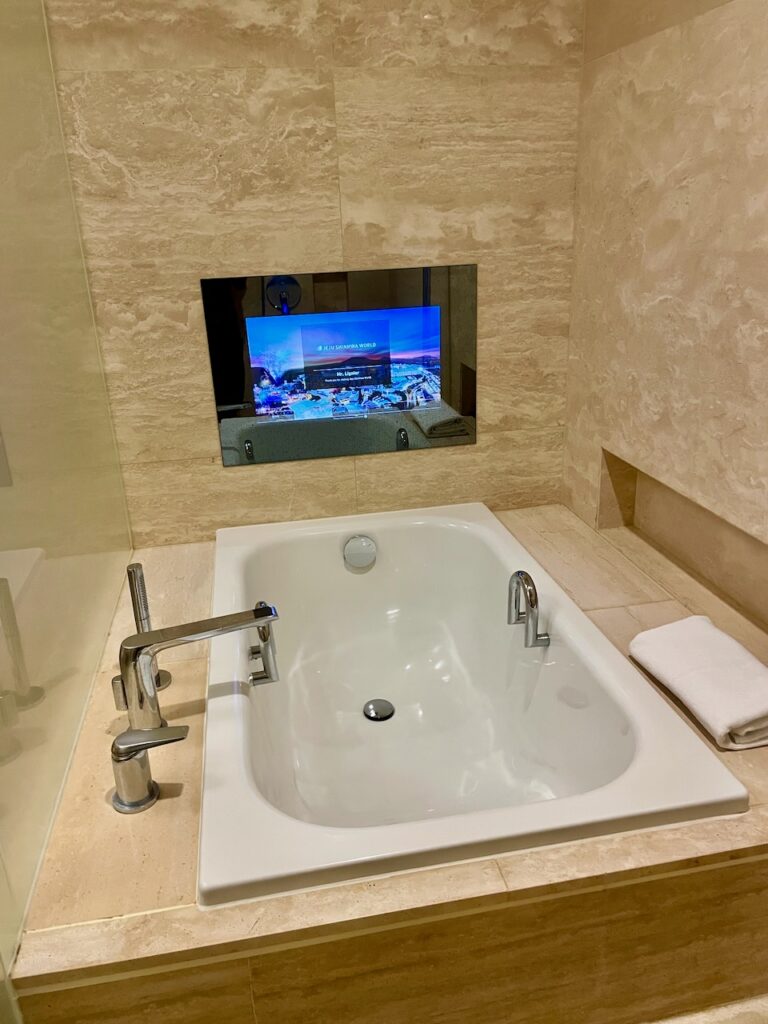
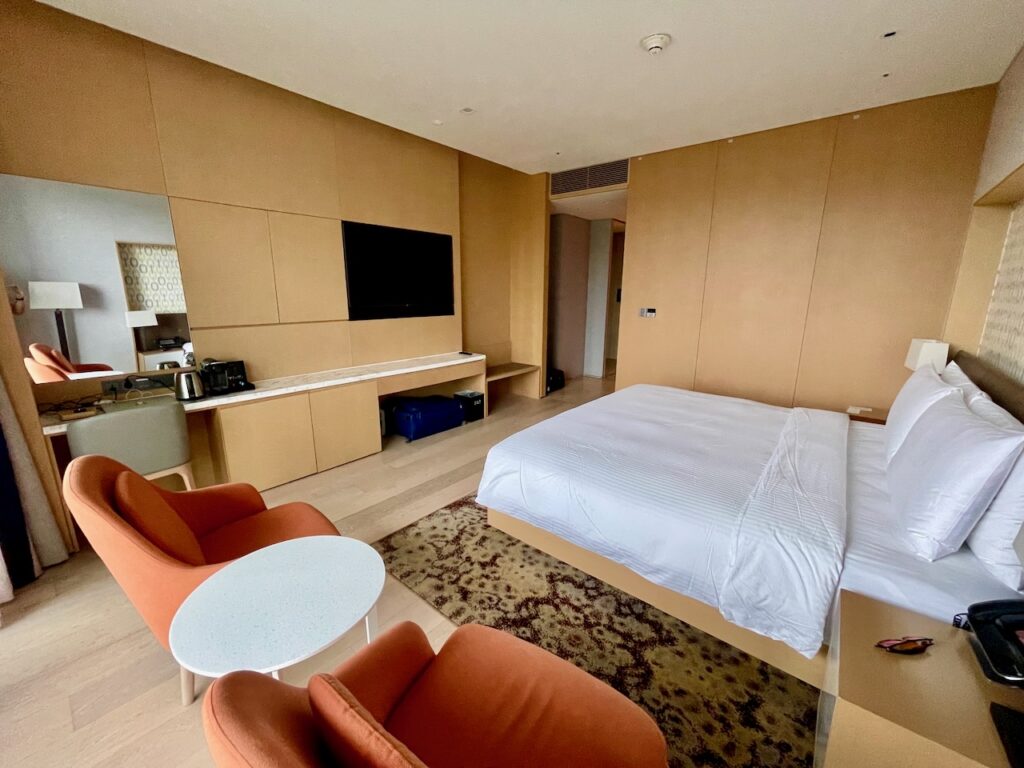
Want a free week-long hotel stay? Consider opening a Marriott Bonvoy Credit Card! Every two years, we apply for it to earn an average of 150,000 Marriott Points just by meeting the sign-up bonus requirements. It’s an easy way to enjoy top-tier hotel stays without the cost!
Day 2 – Exploring Seongsan & Discovering haenyeo
On our first full day we head to Seongsan. Seongsan is one of the places on Jeju where you can observe haenyeo, the traditional female divers known for their free-diving skills. Most of the women are in their 60s-80s and they are like real-life mermaids! They often perform live diving shows near Seongsan Ilchulbong, and you can try fresh seafood that they’ve just brought up from the sea. Search online for the latest schedule because the times and days of the performance may vary.
We were fascinated by the haenyeos and later watched a documentary on them to learn more. These women are truly fierce and courageous. We hope that their culture can be preserved, along with the ocean and marine life.
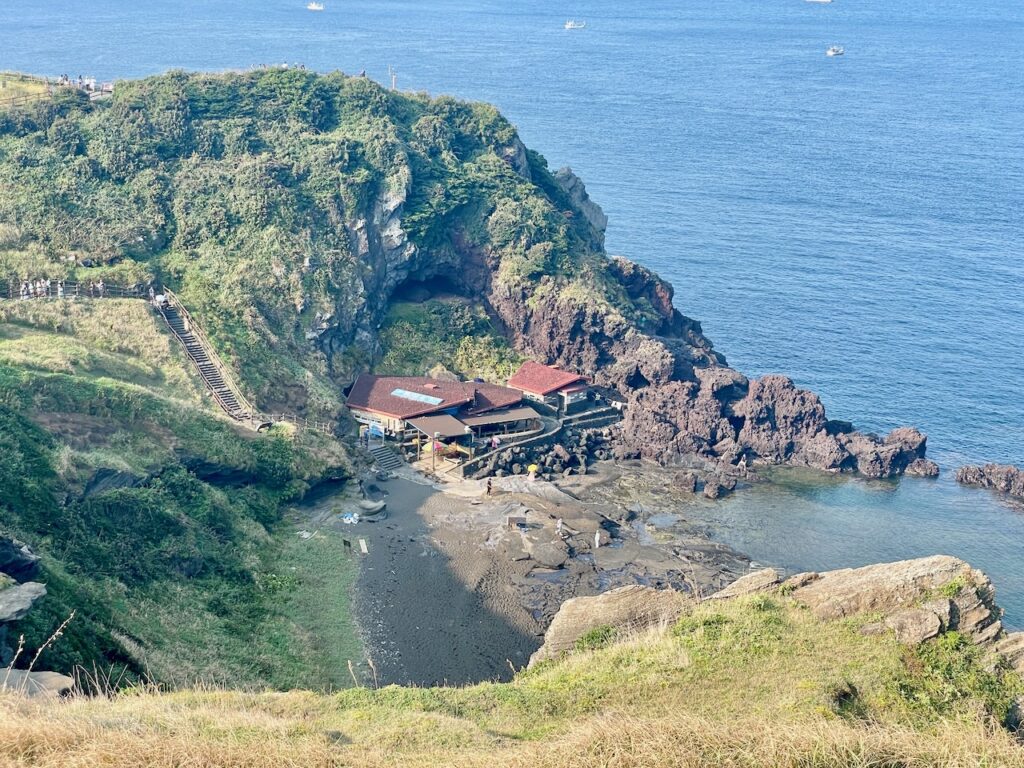
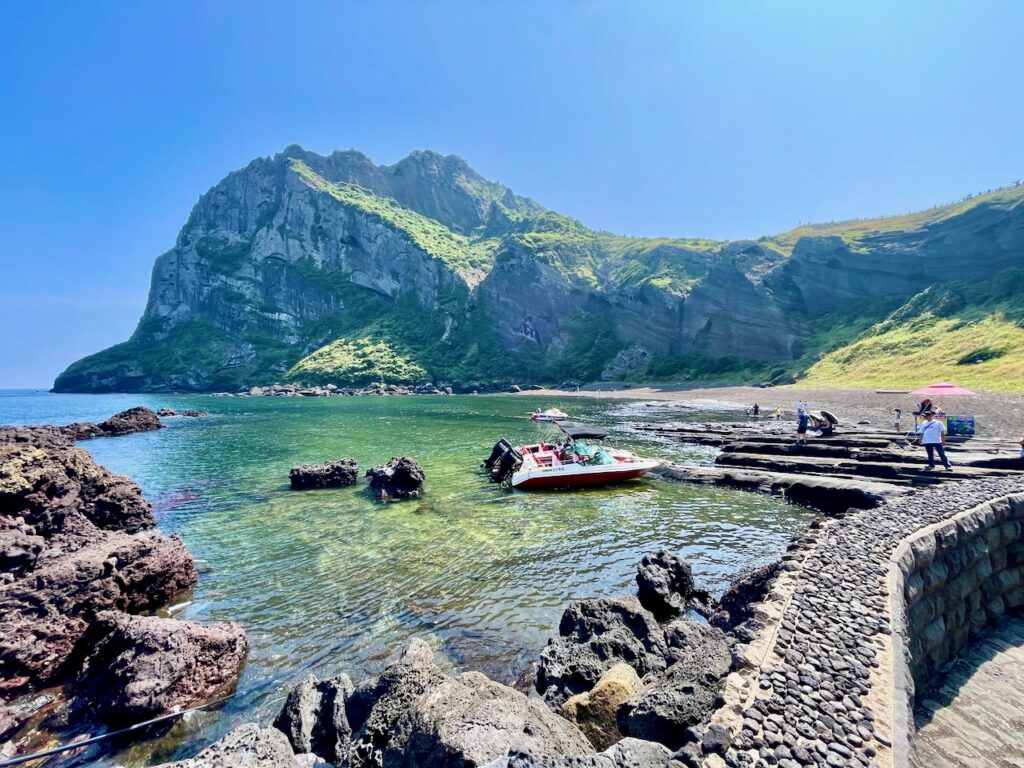
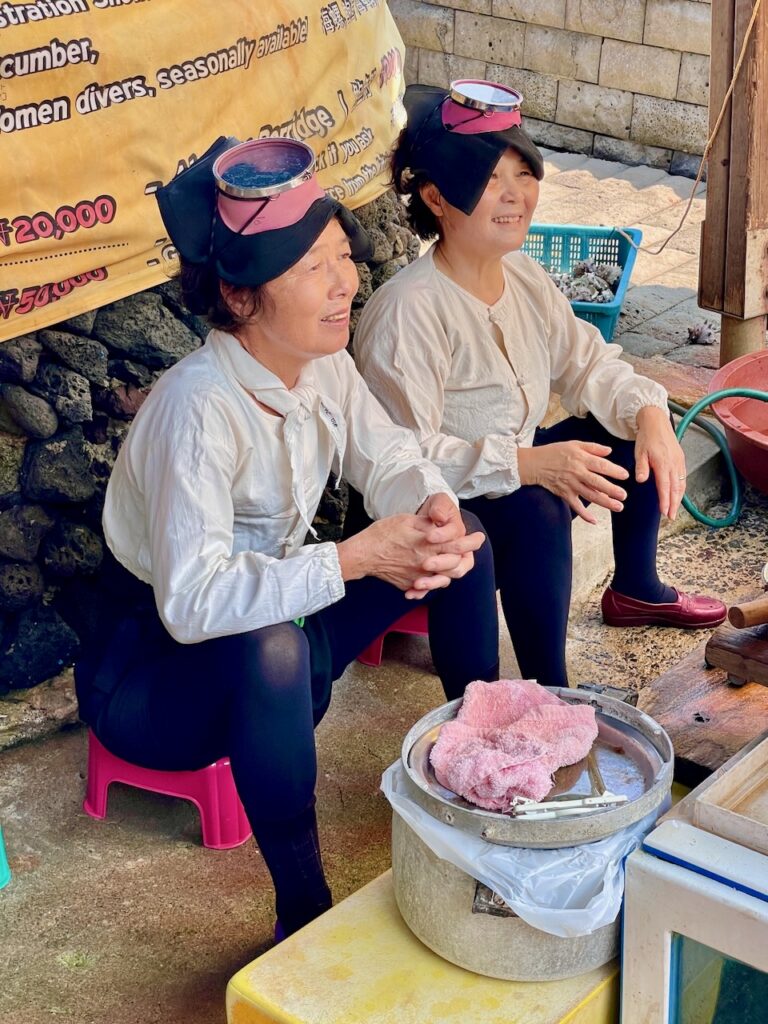
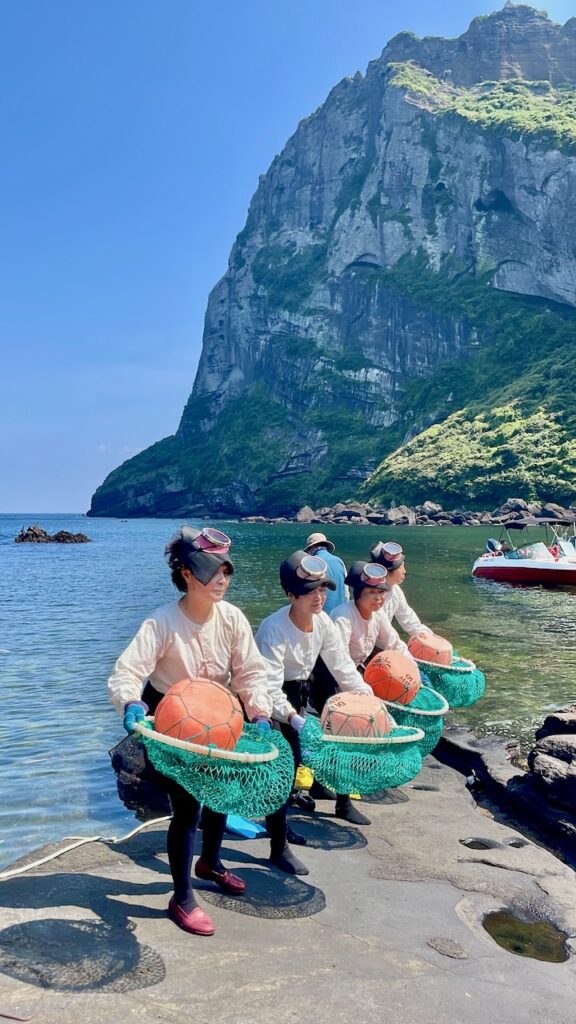
For lunch we stopped by Haesong Sikdang (해송식당), a restaurant that specializes in fresh, locally-sourced seafood. The menu features dishes like grilled fish (such as mackerel and yellowtail) or seafood stews (haemultang). We opted for a spicy stew that was cooked to perfection and came with the usual banchan (side dishes).
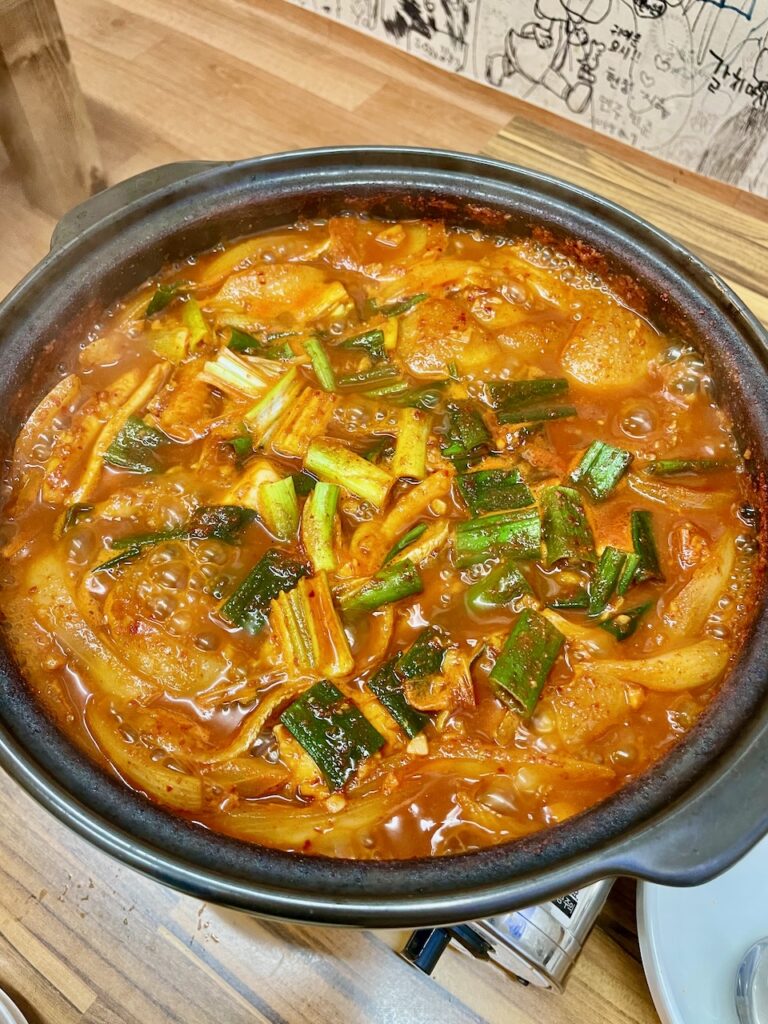
In the afternoon, we climbed the volcanic crater of Seongsan Ilchulbong (Sunrise Peak) . This hike has breathtaking views of Jeju’s coastline and the surrounding landscape at the Umutgae Lookout. This is a relatively short but steep hike. There is not much shade so make sure to wear sunscreen and a protective layer, especially if you plan to hike during the afternoon as we did.
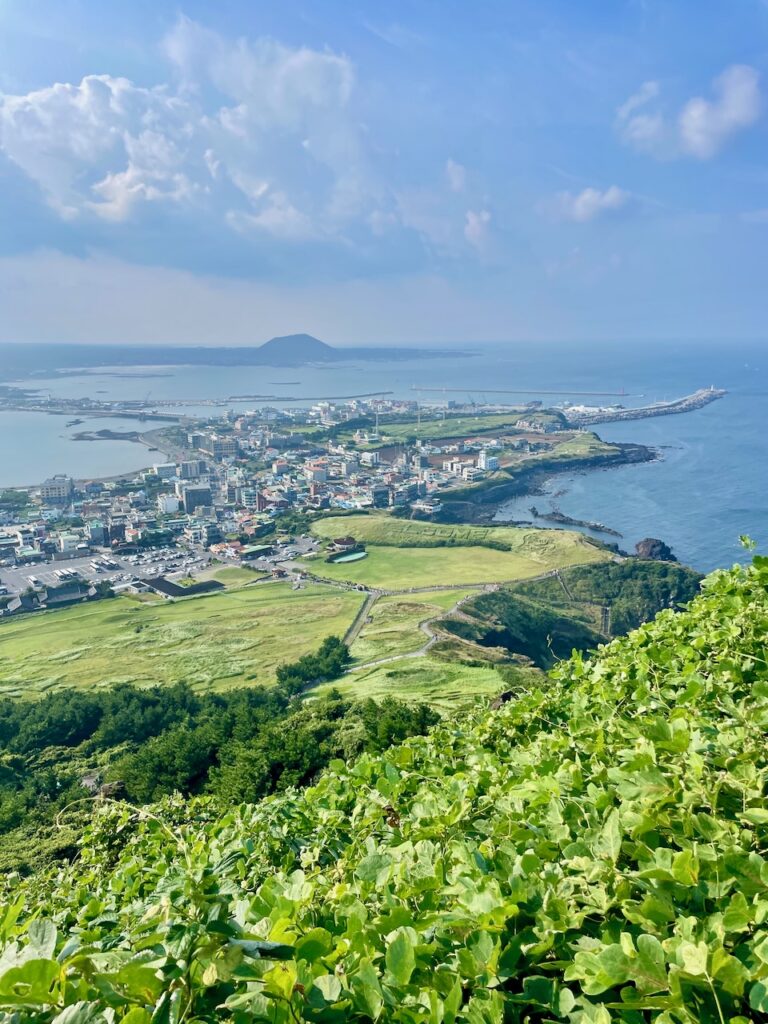
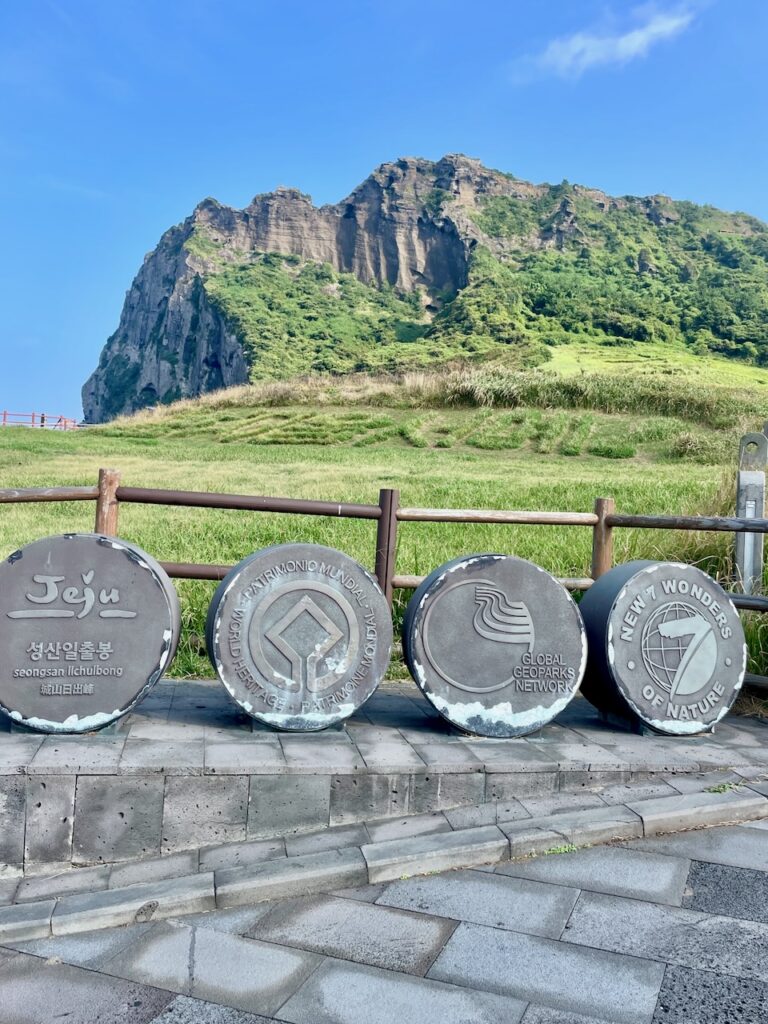
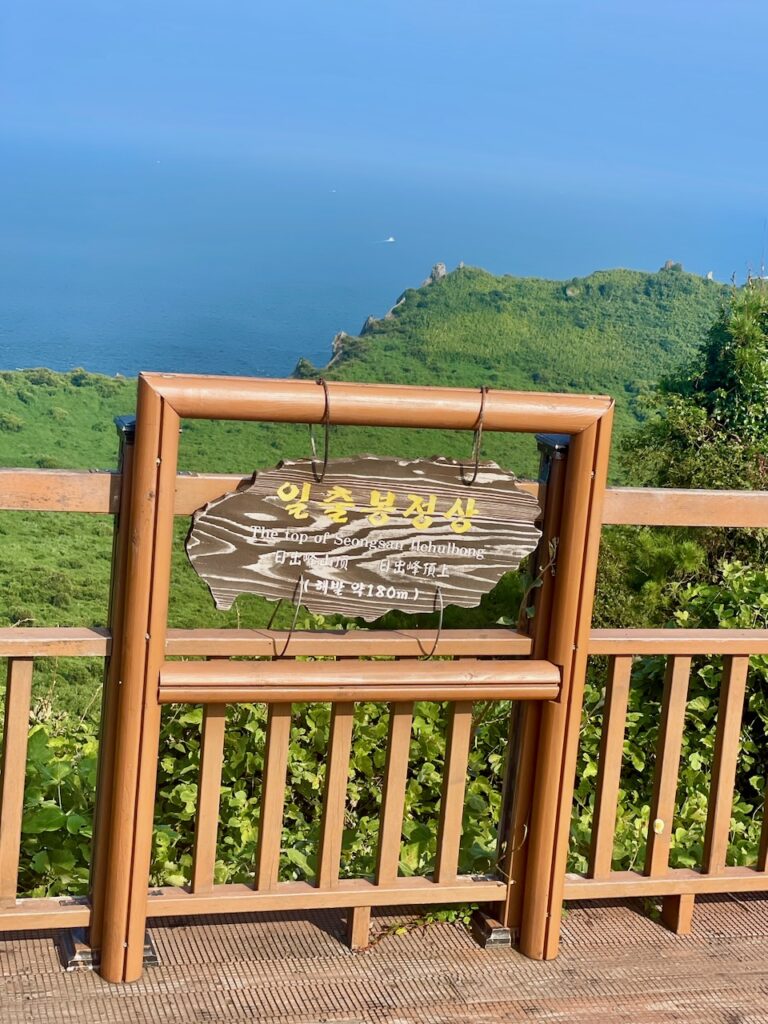
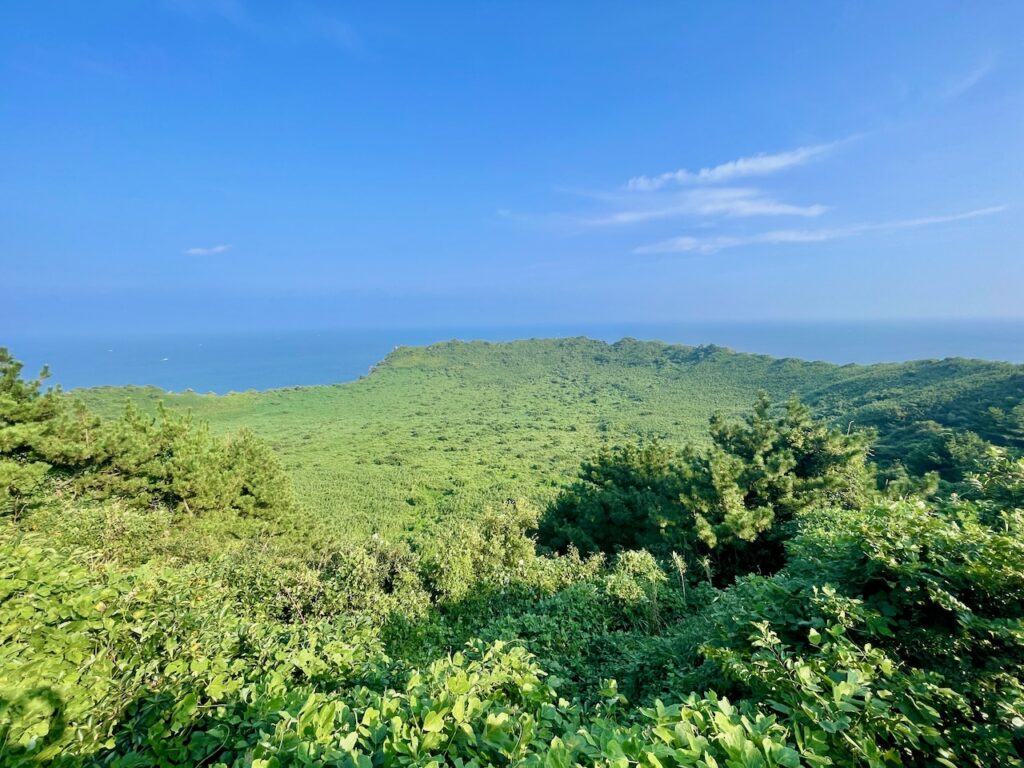
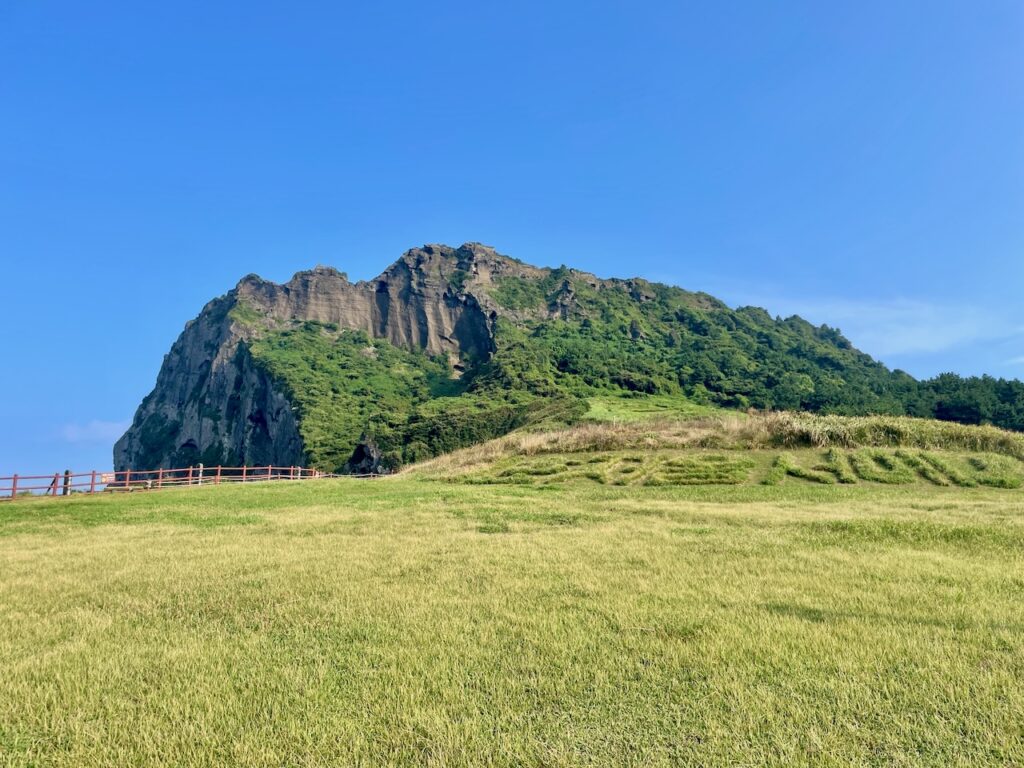
Before heading back to our hotel, we stopped by Pengohoda, a Gluten Free cafe to enjoy some amazing cake. Whether or not you are sensitive to gluten, you must stop by this cafe and enjoy some of their desserts!
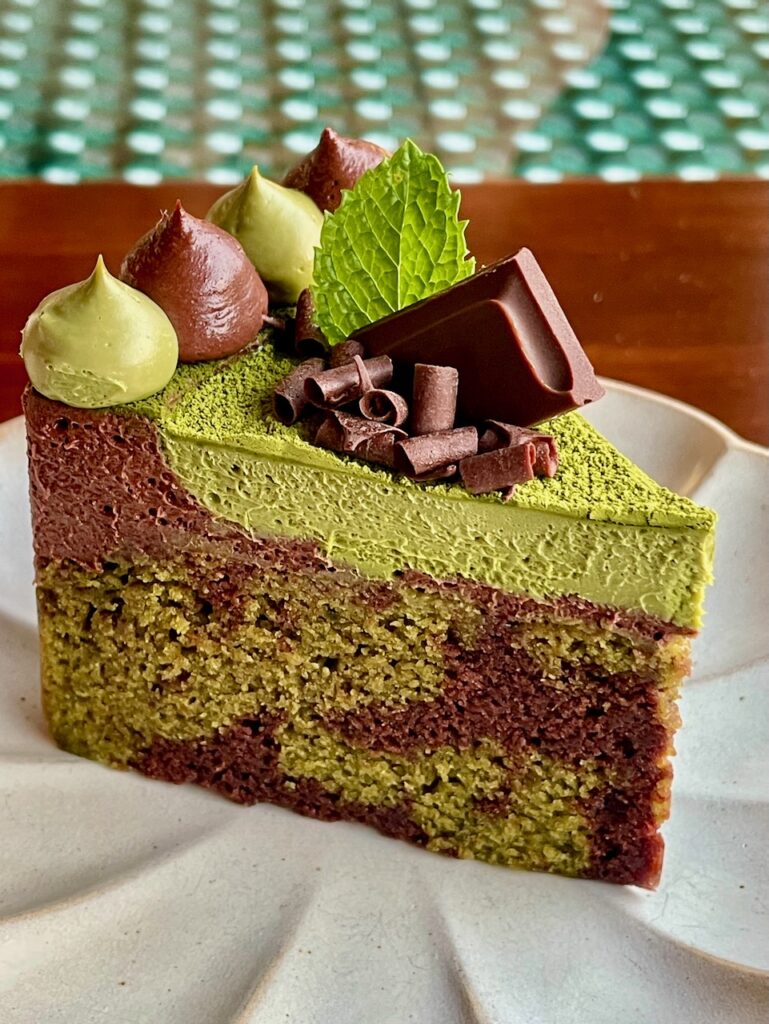
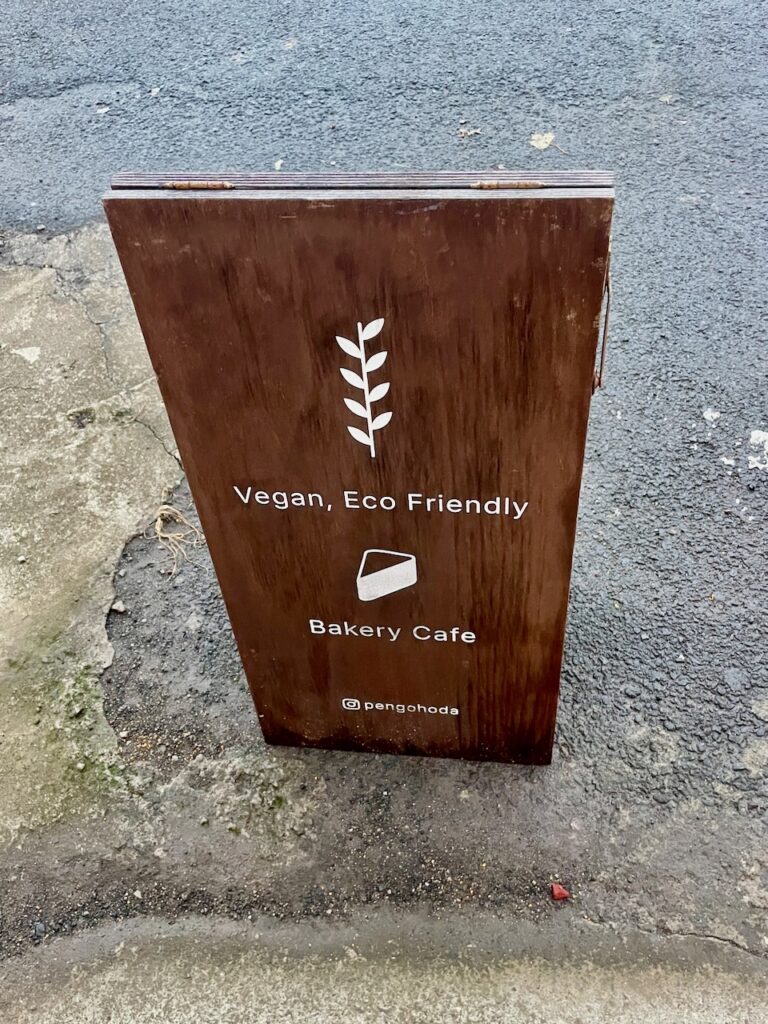
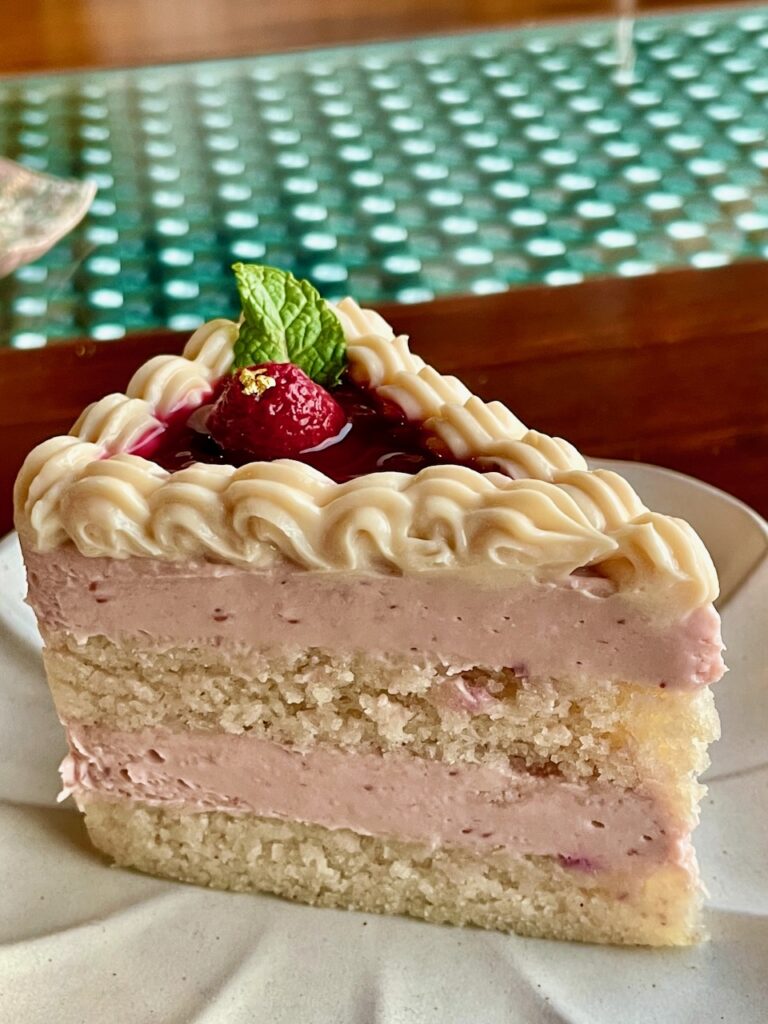
Day 3 – More food and tea
On our third day, we started by trying another fish restaurant: 생원전복 (Saengwon Jeonbok). It is a popular restaurant known for its high-quality abalone dishes. “전복” (jeonbok) means “abalone,” and the restaurant is famous for showcasing this Jeju specialty in various way. We opted for the Jeonbok Juk (Abalone Porridge). Abalone porridge that is made with rice and abalone simmered to perfection.
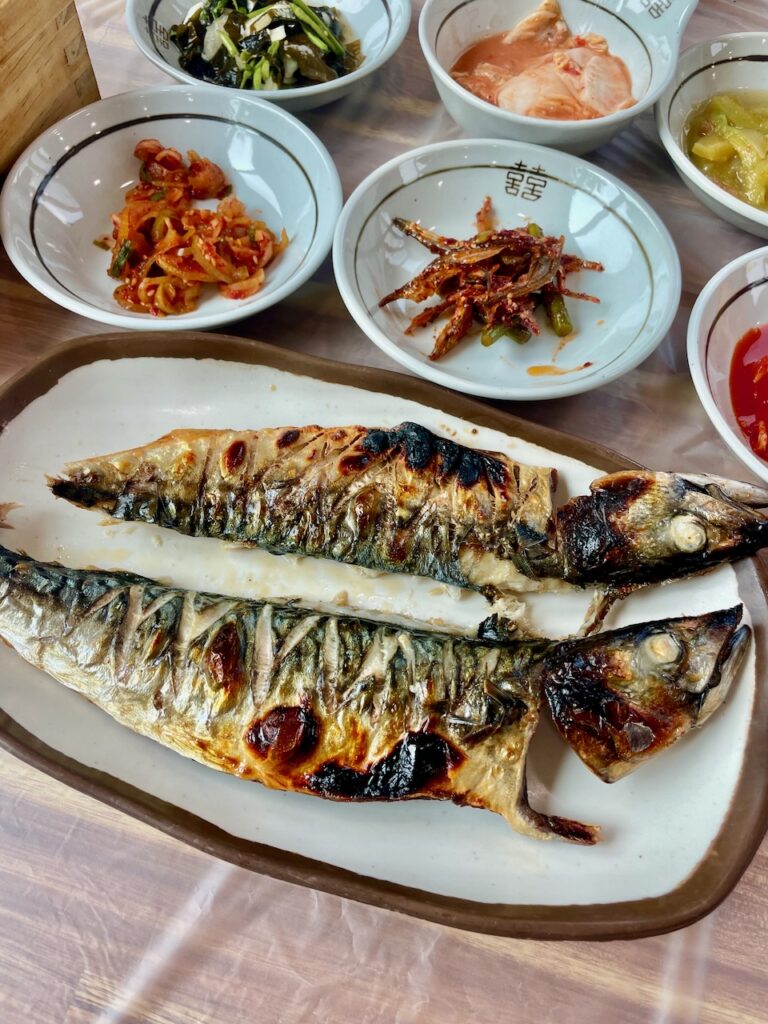
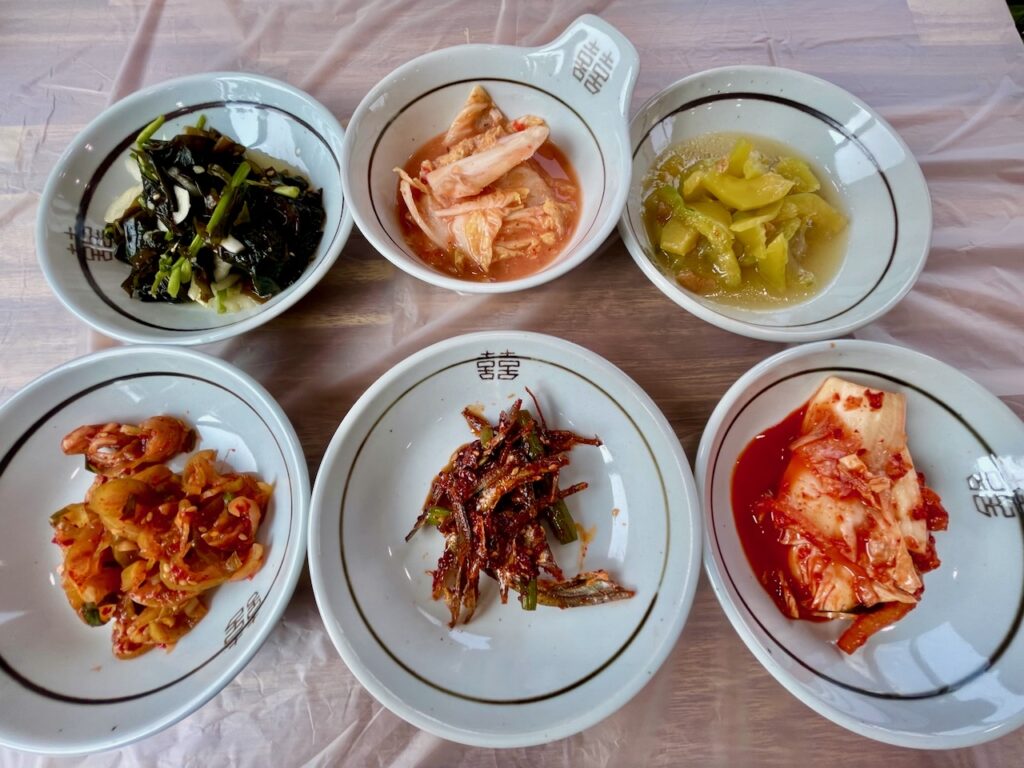
We then visited the O’sulloc Tea Museum which we didn’t have high expectations for but we ended up loving the tea. The museum is dedicated to showcasing Korea’s rich tea heritage, with a special focus on Jeju’s green tea, grown in the island’s volcanic soil. There are exhibits detailing the history and process of tea production as well as beautiful surrounding including lush green tea fields. The highlight of the visit is the museum’s tea house, where we sampled a variety of premium teas. There is also a restaurant and cafe where we sampled some delicacies made of green tea, like their wonderful green tea cheesecake!
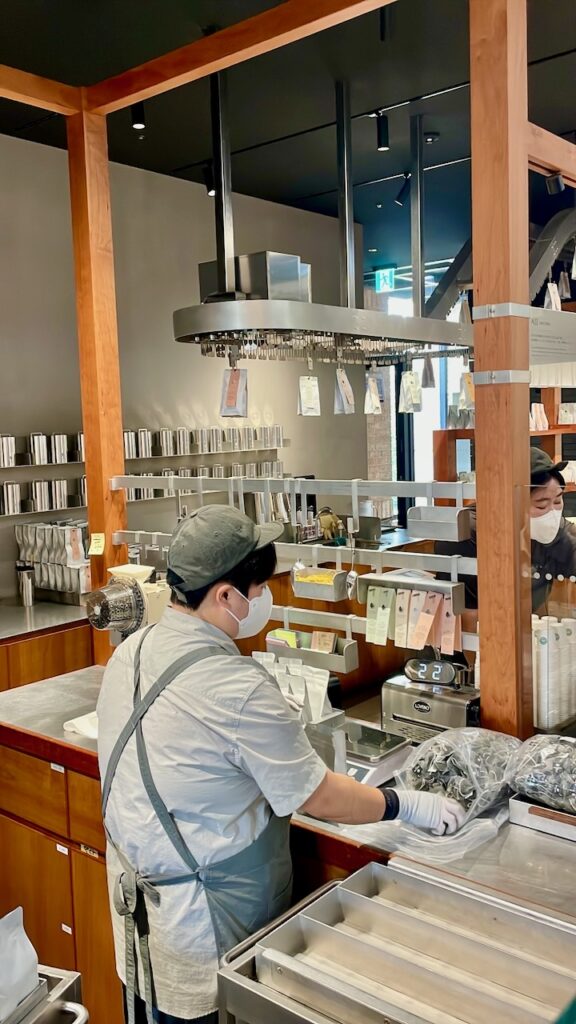
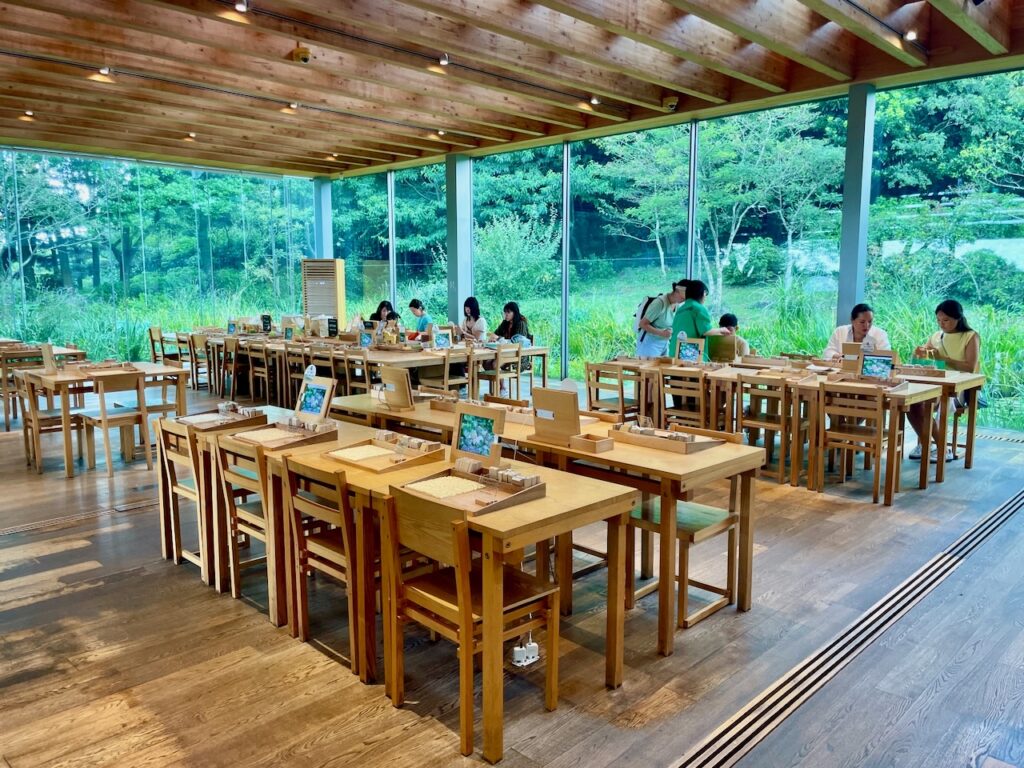
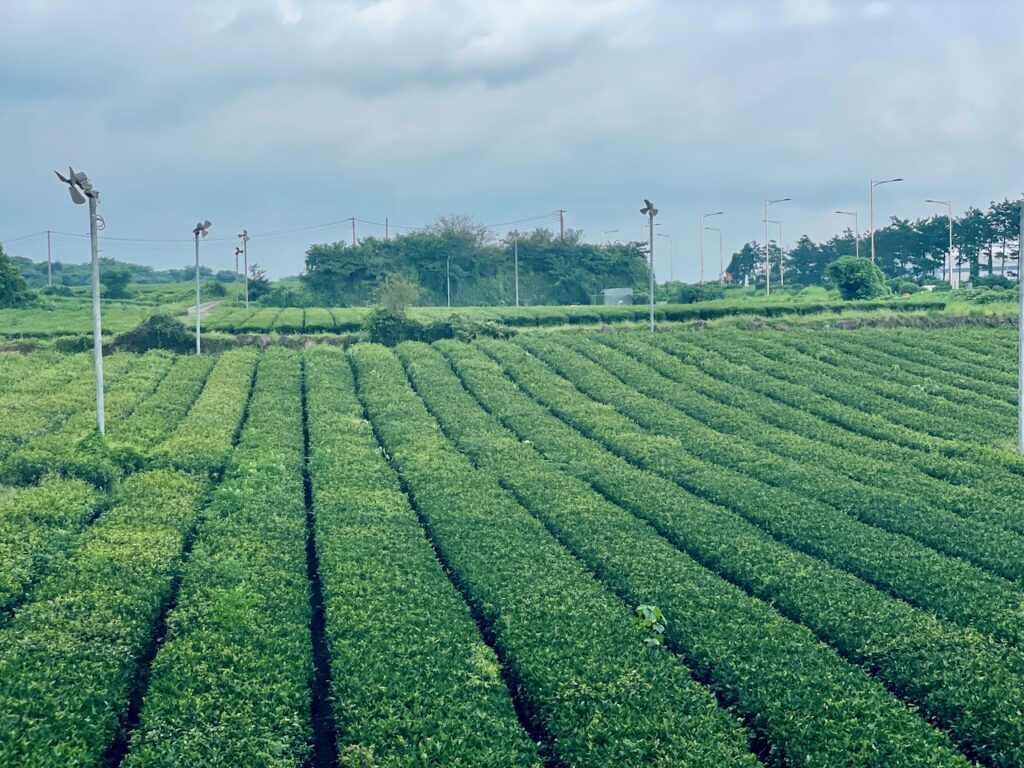
For dinner, we decided to have our first Korean BBQ. We went to 물통식당 (Multong Sikdang), a popular restaurant in Jeju known for its delicious and authentic black pork dishes, which are a specialty of the island! We got introduced on how to properly BBQ in South Korea, how to cook the meat, how to assemble all the toppings together using salad leaves to wrap the meat. This place has great service and we loved the experience! Not all BBQ places will take the time to show you how to properly eat your meal so we really appreciated the owner making the extra effort.
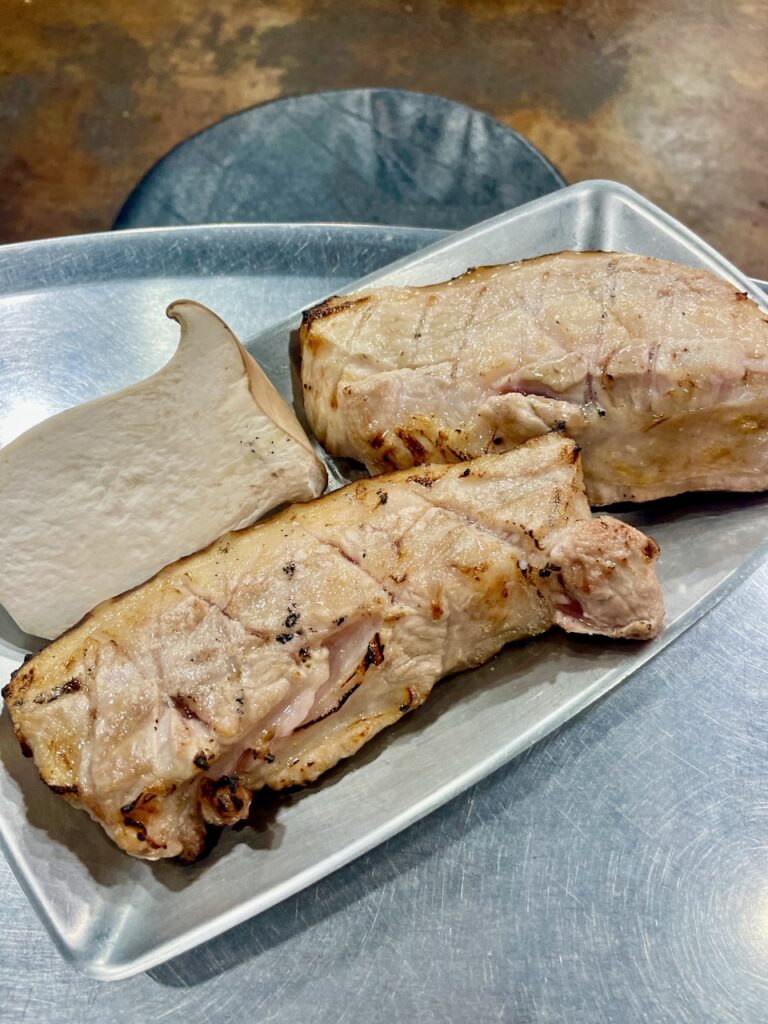
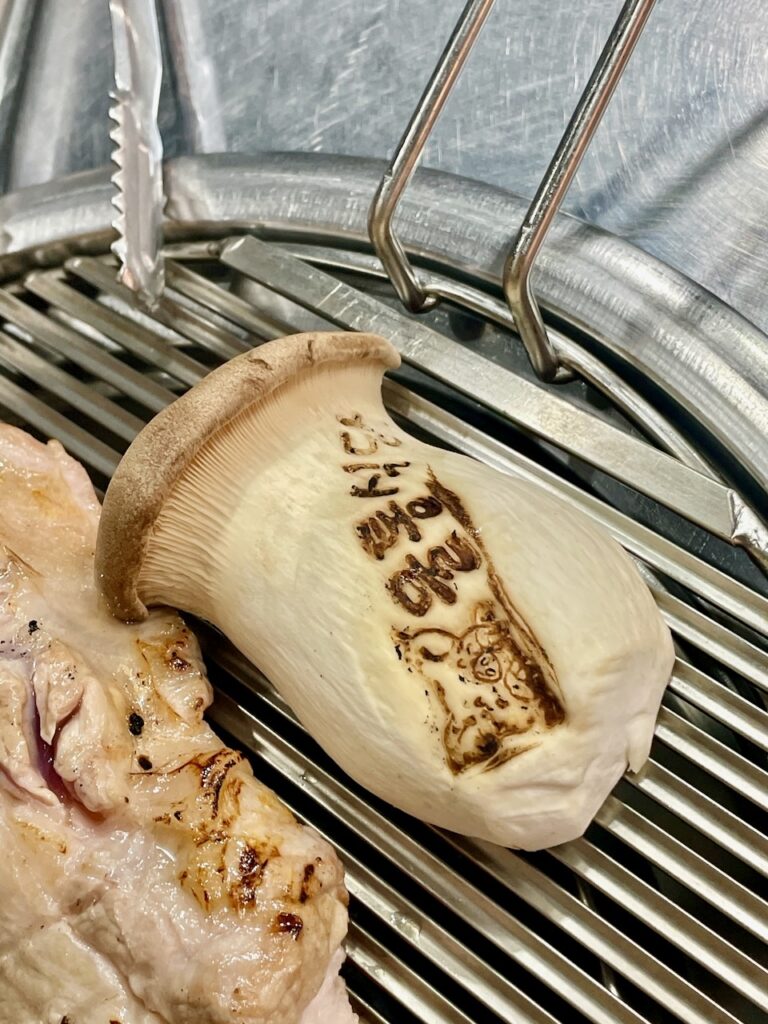
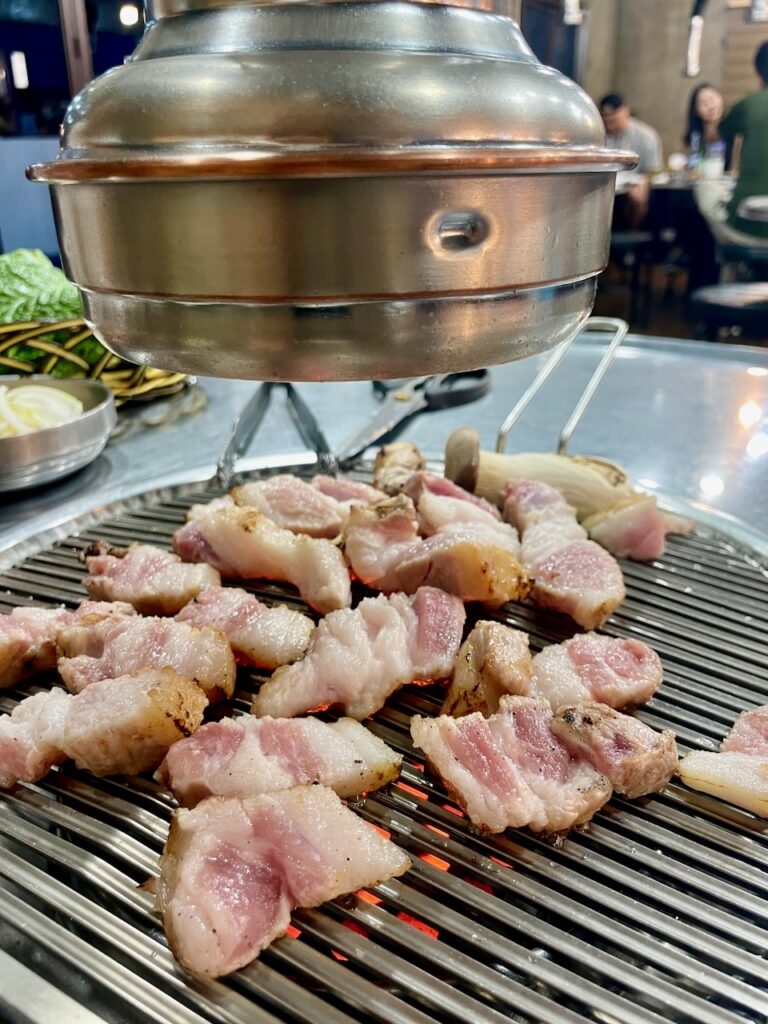
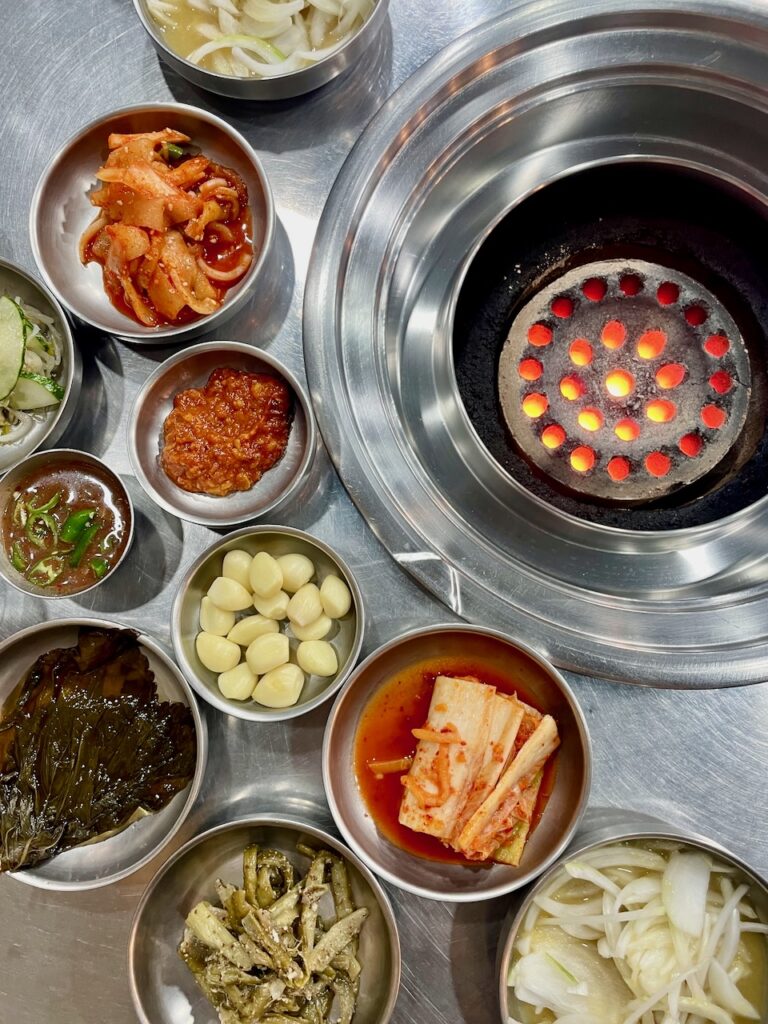
Day 4 – Waterfalls, Coastal Sights and Black Pork bibimbap
On our fourth day, we checked out a bunch of waterfalls and coastal sights. All of these sights are not far from each other so you can drive along the road and stop at each of them.
Our first stop was at Cheonjiyeon Waterfall, a 22-meter waterfall near Seogwipo, surrounded by lush greenery. The name means “Heaven and Earth,” and it’s known for its peaceful beauty. We then continued our hike to reach the nearby Sojeongbang Waterfall. This waterfall flows directly into the ocean, creating a spectacular view, especially during high tide.
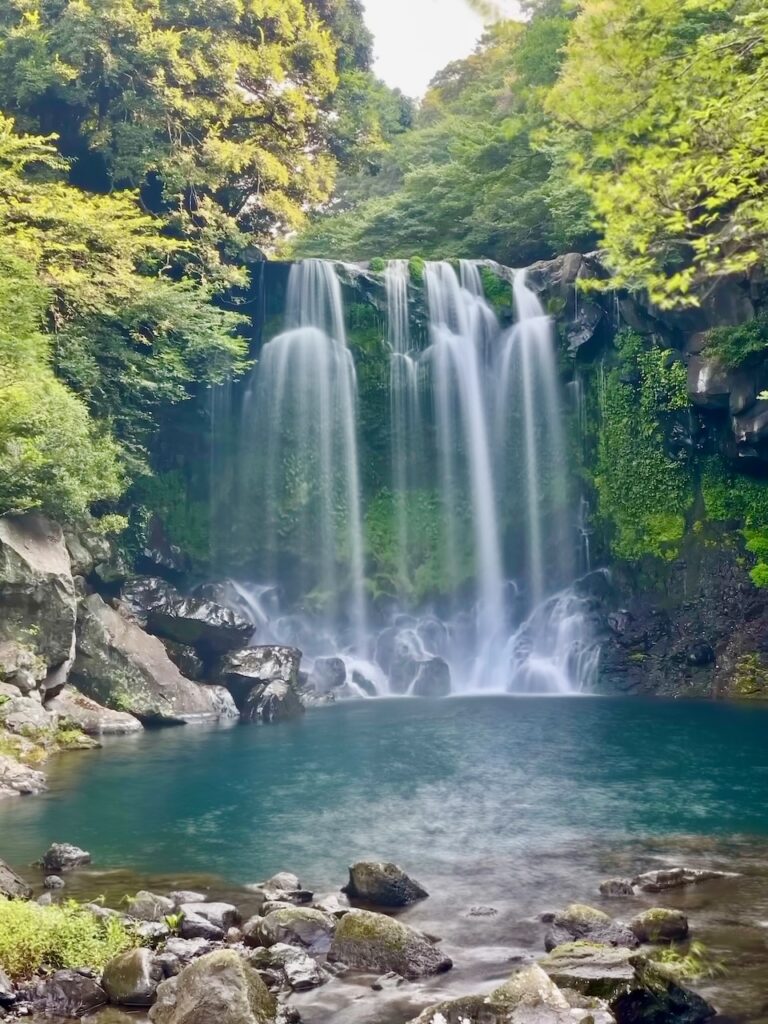
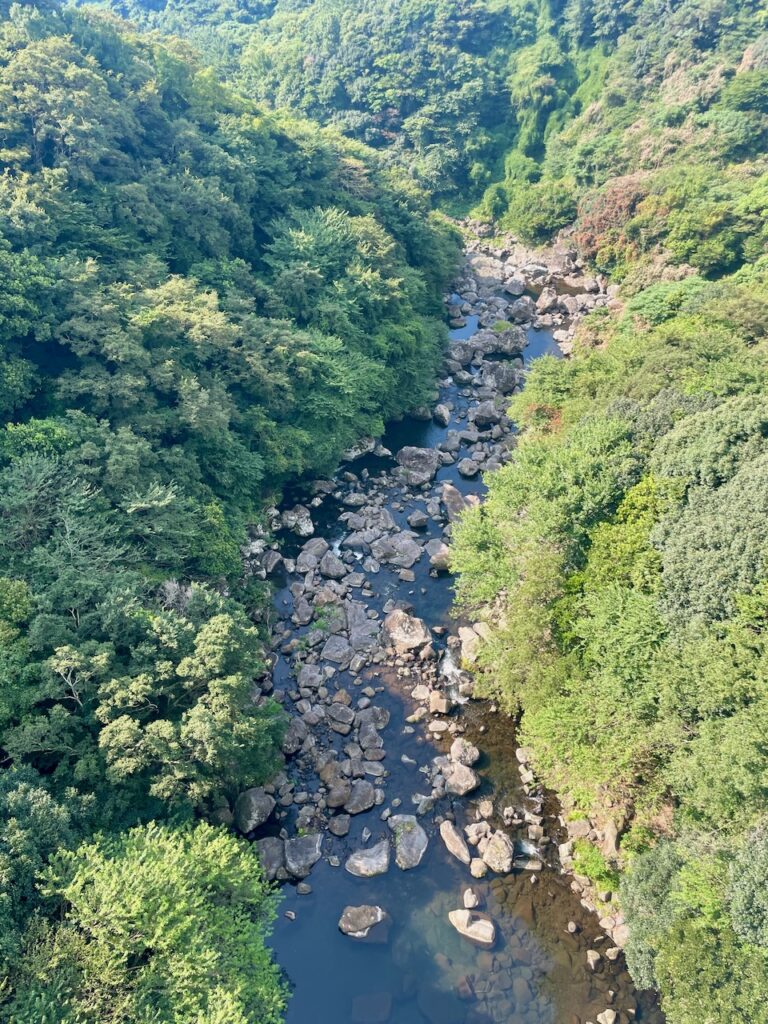
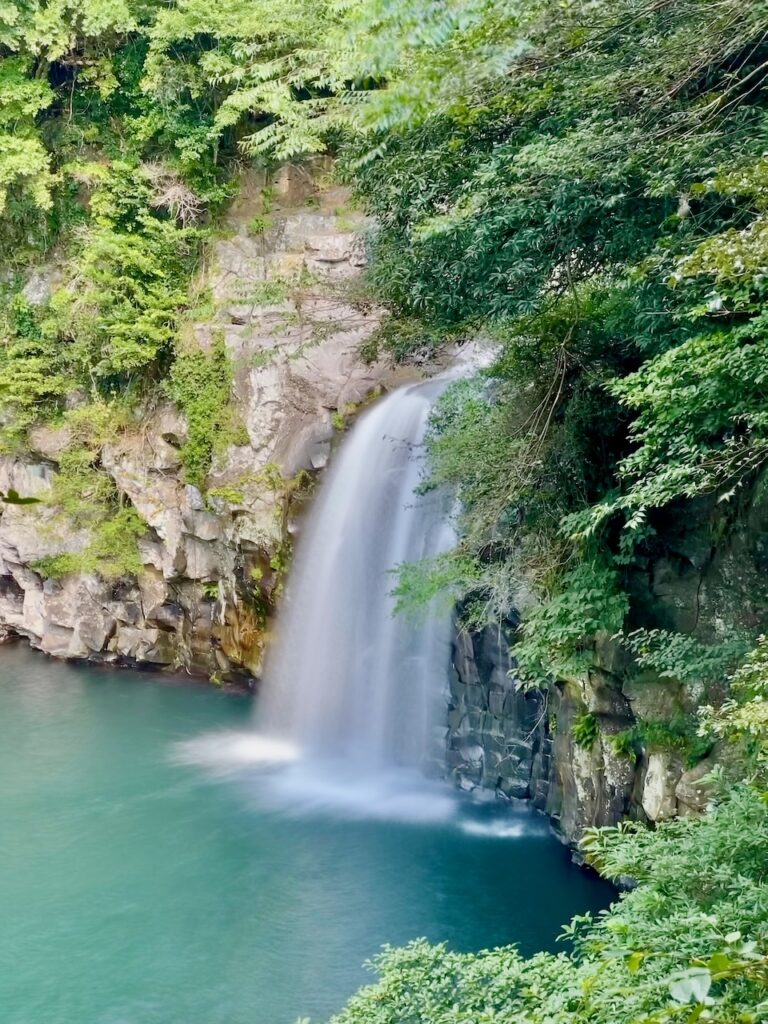
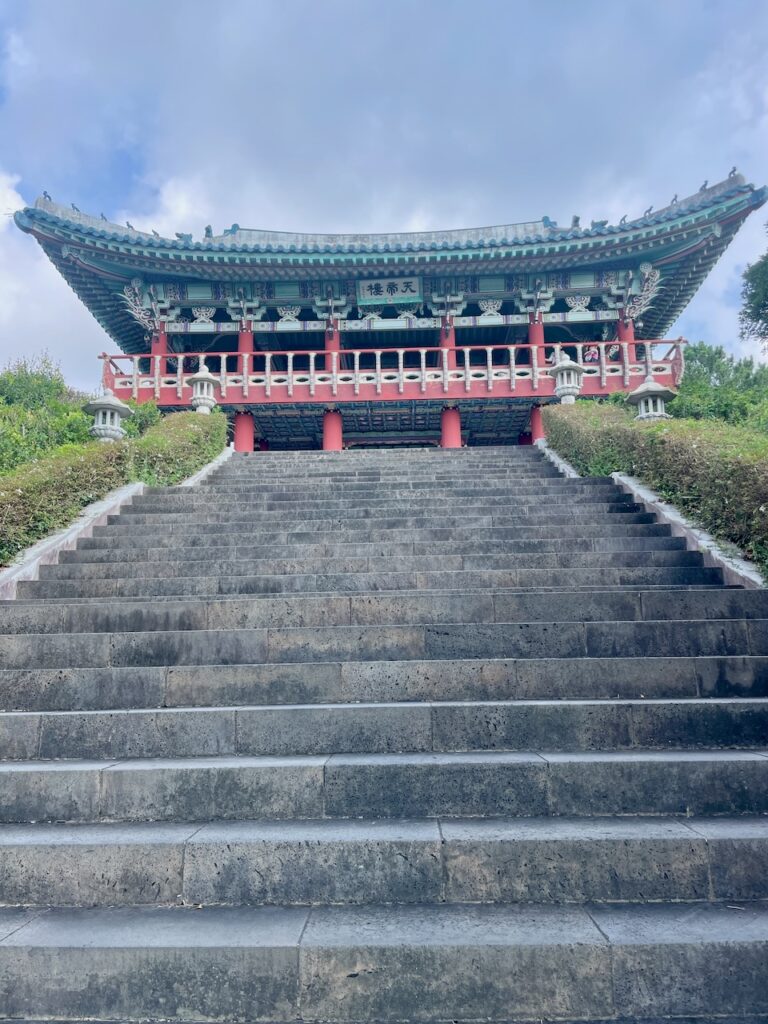
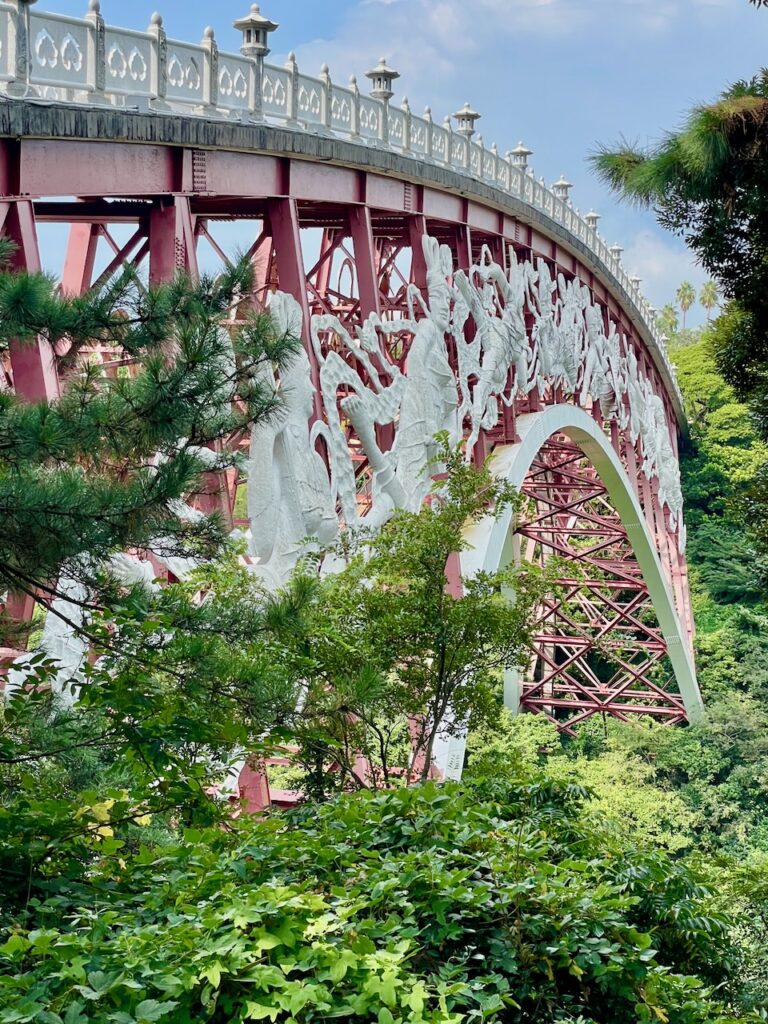
We then took the car to drive to Cheonjeyeon Waterfall, a three-tiered waterfall, surrounded by dense forest. The name means “The Pond of God,” reflecting its sacred history. The area is peaceful, with a scenic trail leading to the falls.
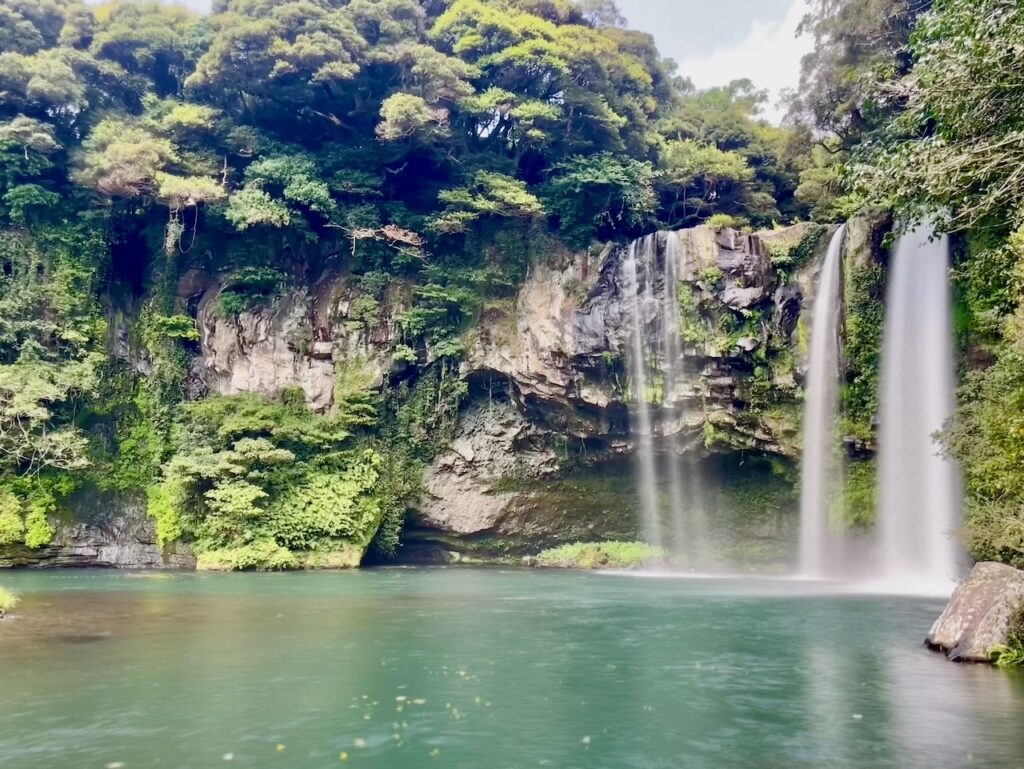
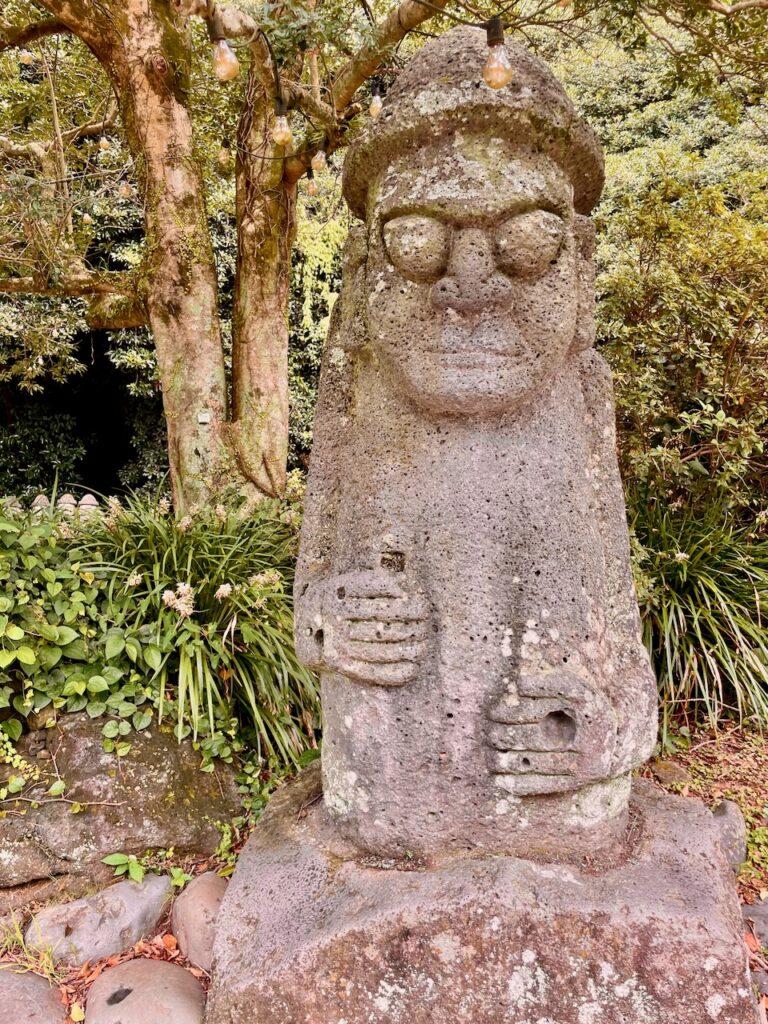
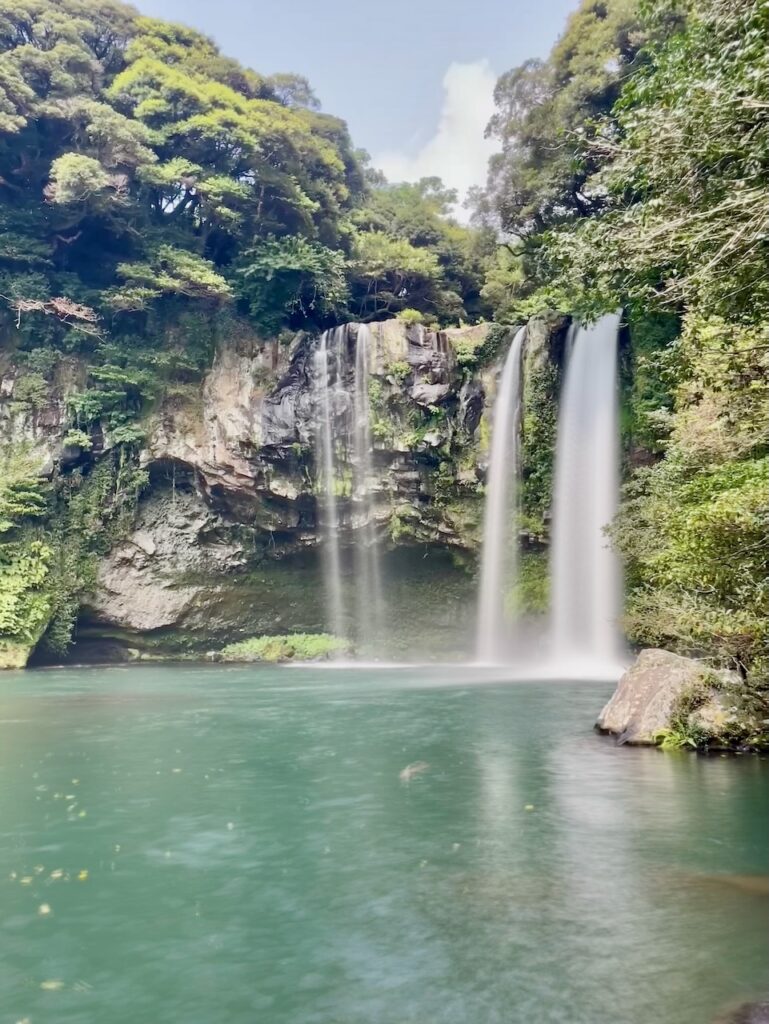
For lunch, we went into the Seogwipo town and enjoyed some wonderful black pork & octopus bibimbap at 중섭이네식당 (Jungseobine Sikdang).
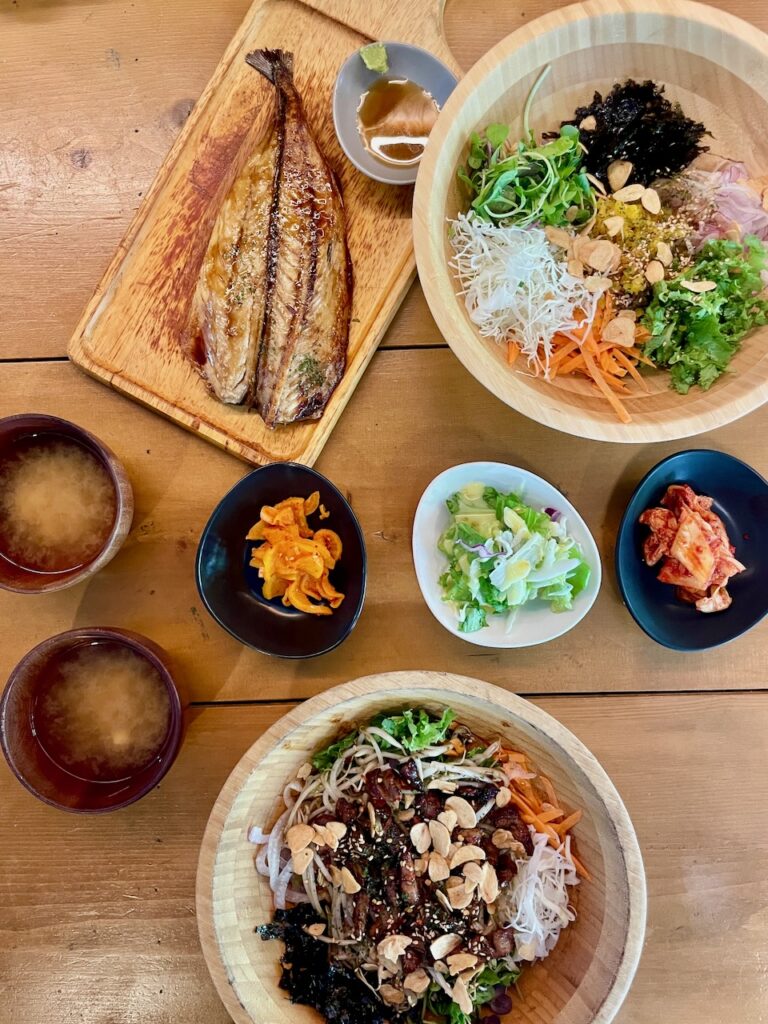
We then checked out Seogwipo Olle Market, a traditional market. The market offers a wide variety of local goods, fresh produce, seafood, and Jeju specialties like black pork and tangerines. It’s a great place to sample authentic Korean street food.
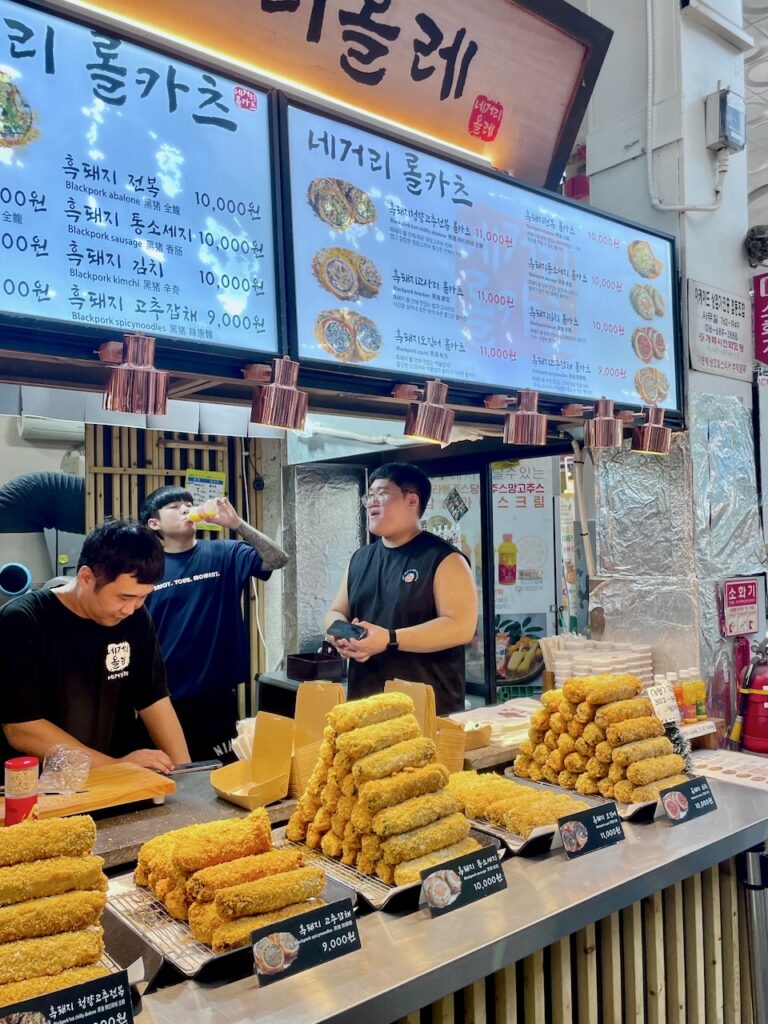
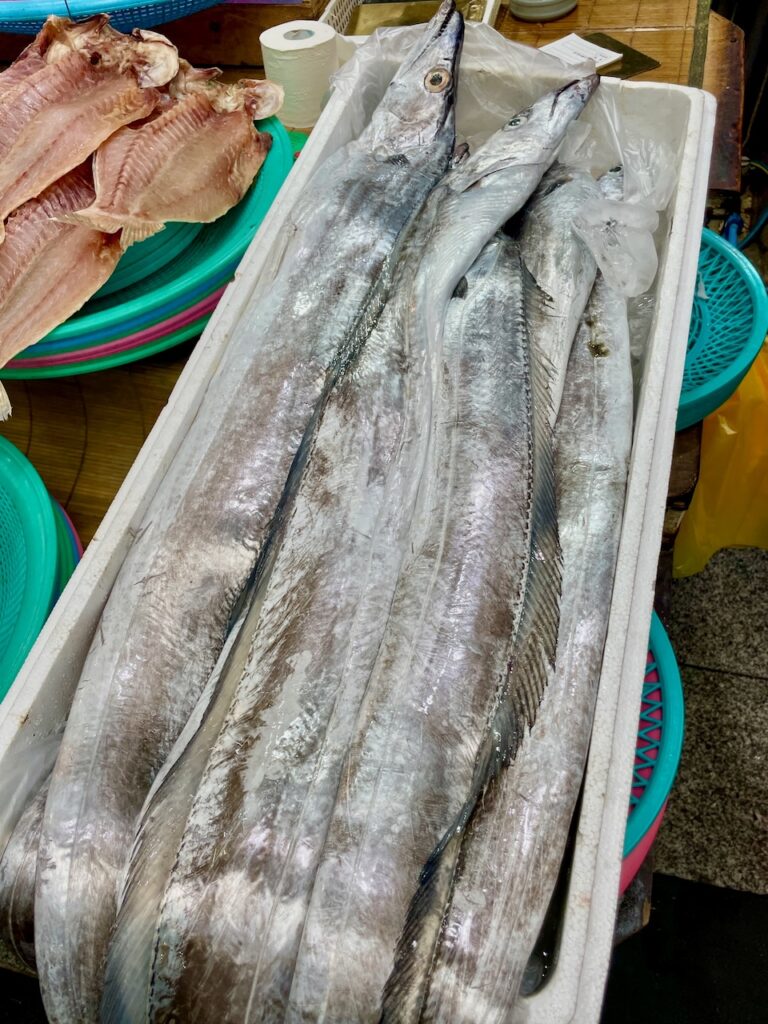
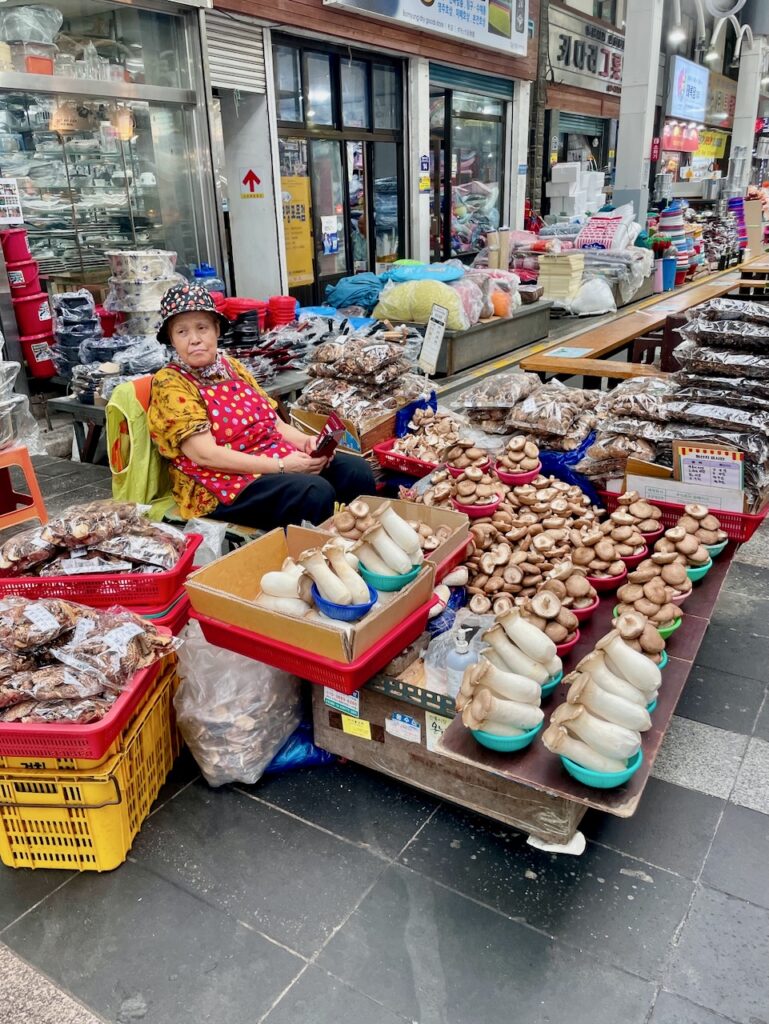
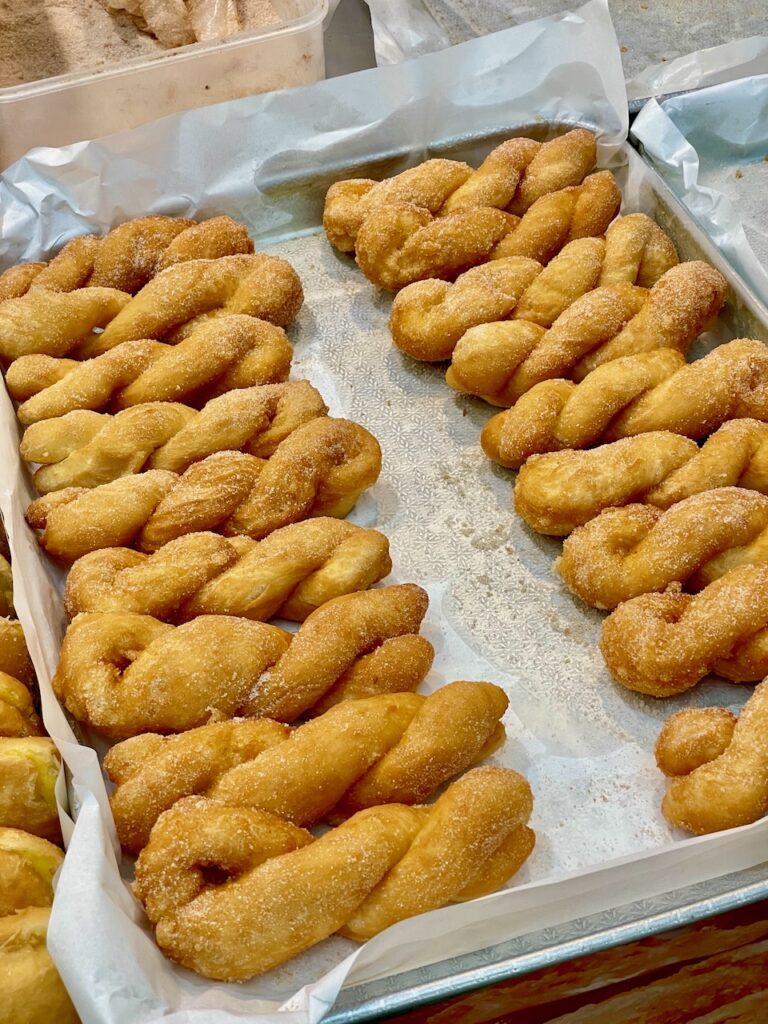
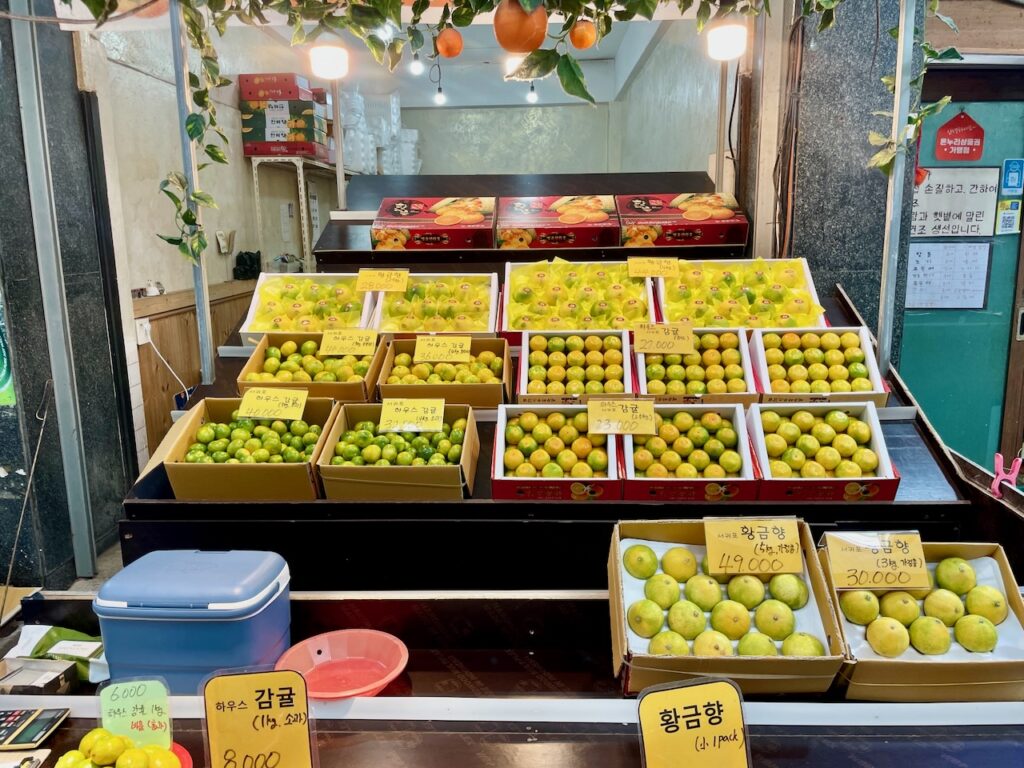
We then continued our sightseeing by stopping at Jusangjeollidae, which is a striking formation of hexagonal basalt columns, created by volcanic activity. The dramatic cliffs make this a must-see natural wonder.
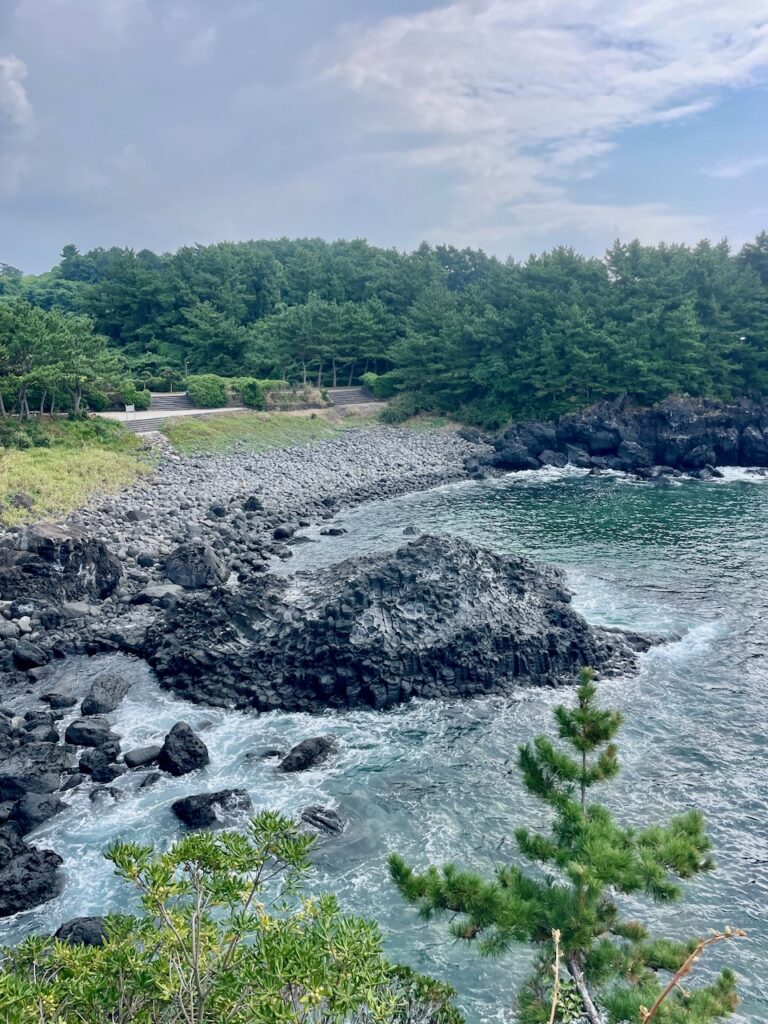
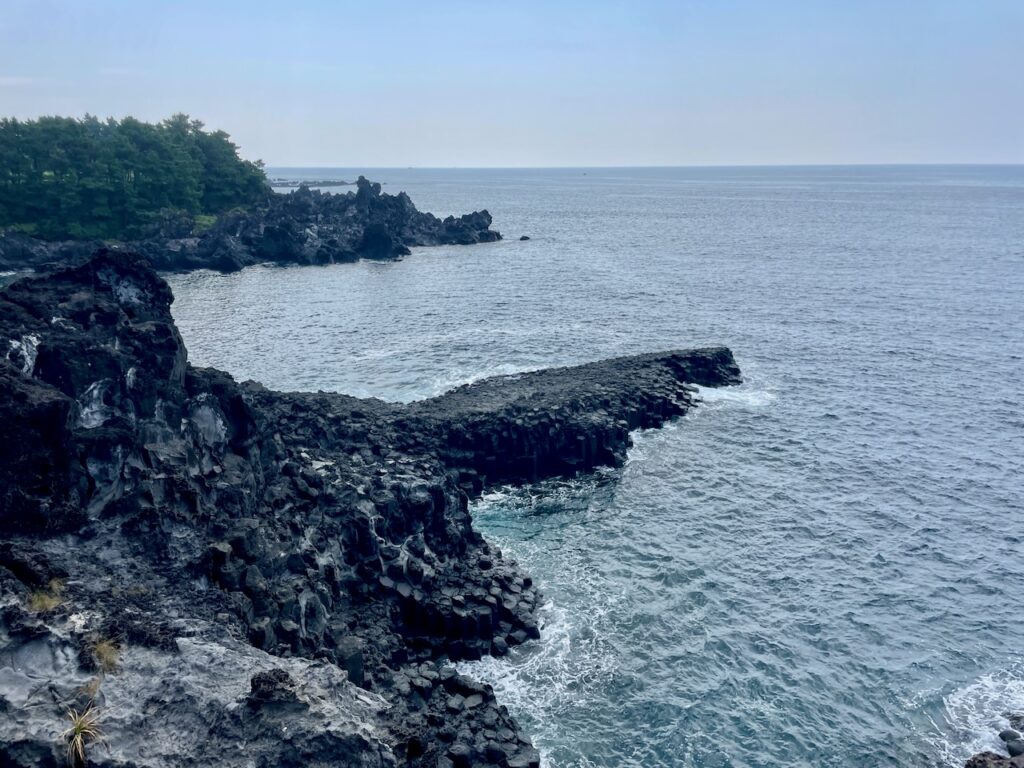
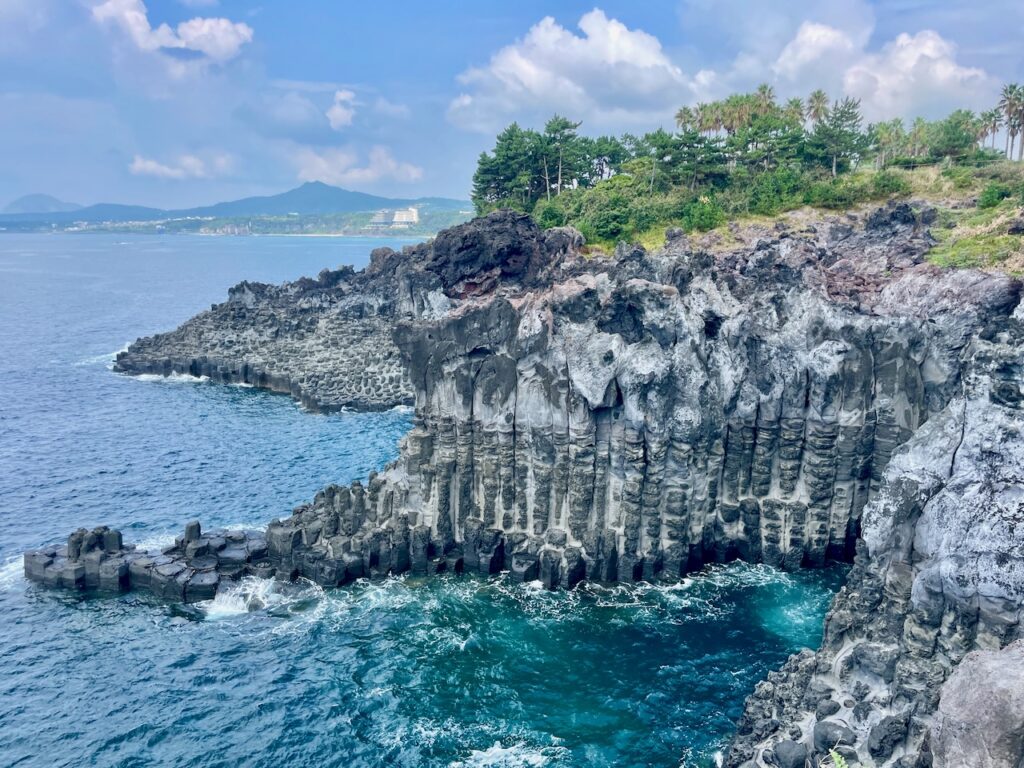
Day 5 – Hiking Hallasan Moutain
On our last day, we decided to take upon climbing to the top of Hallasan. Hallasan is Jeju Island’s and South Korea’s highest peak and a must-see for outdoor enthusiasts. You have to be quite fit to do this hike because it can take 5-7 hours to complete. The view at the top is really stunning!
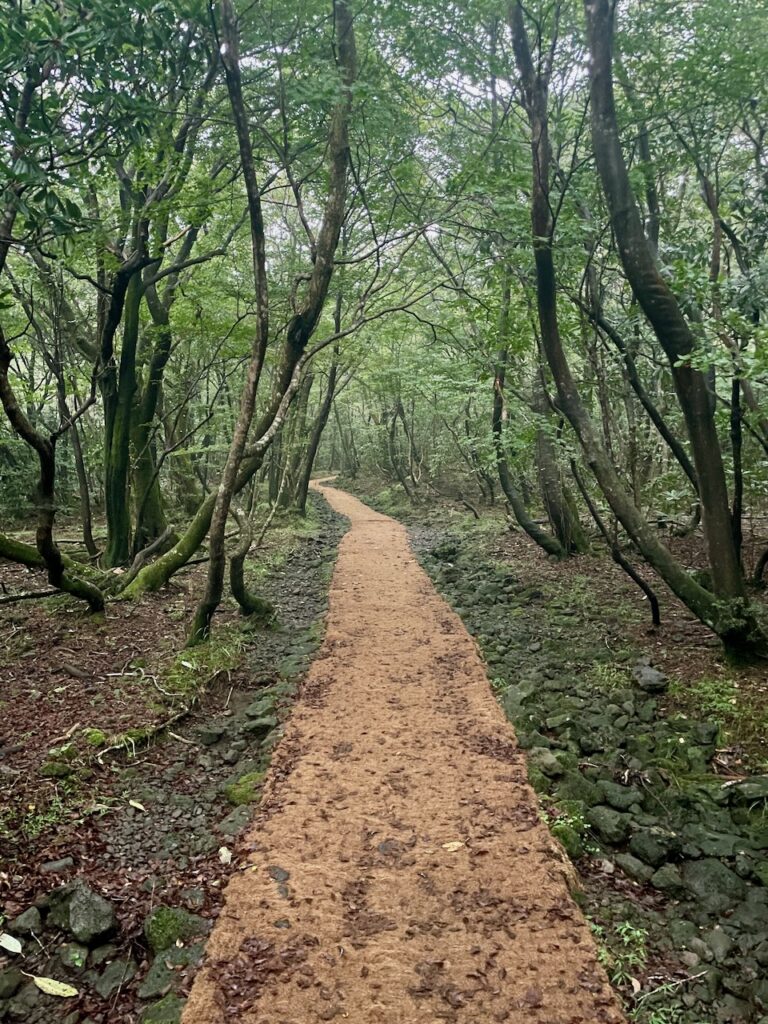
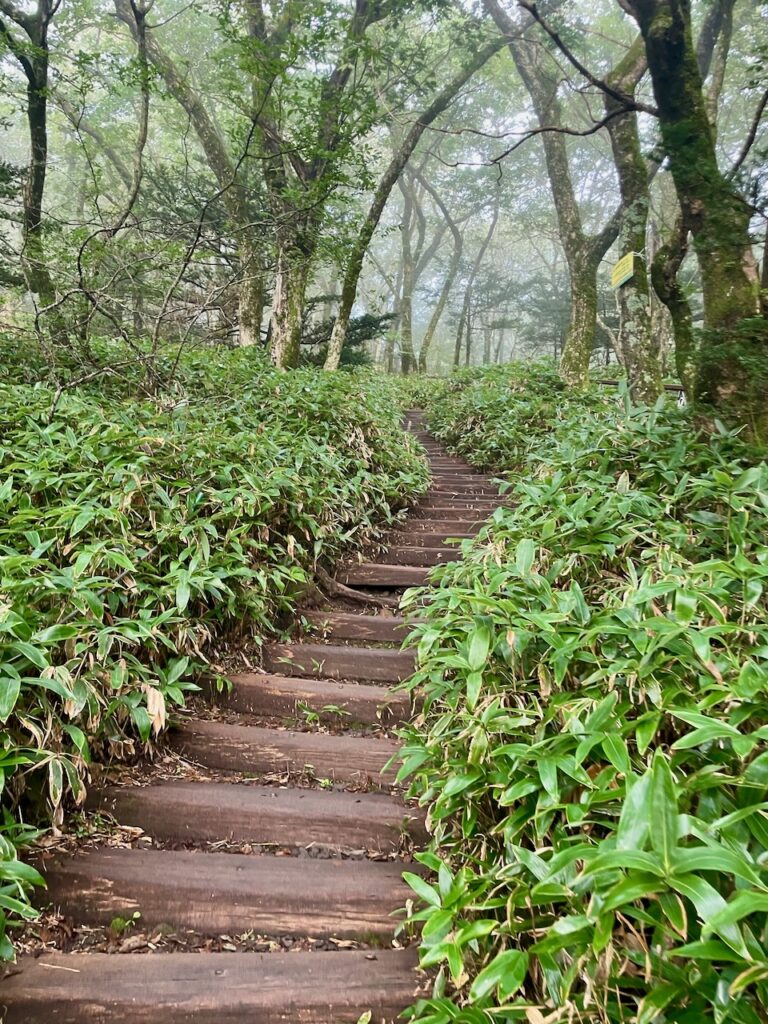
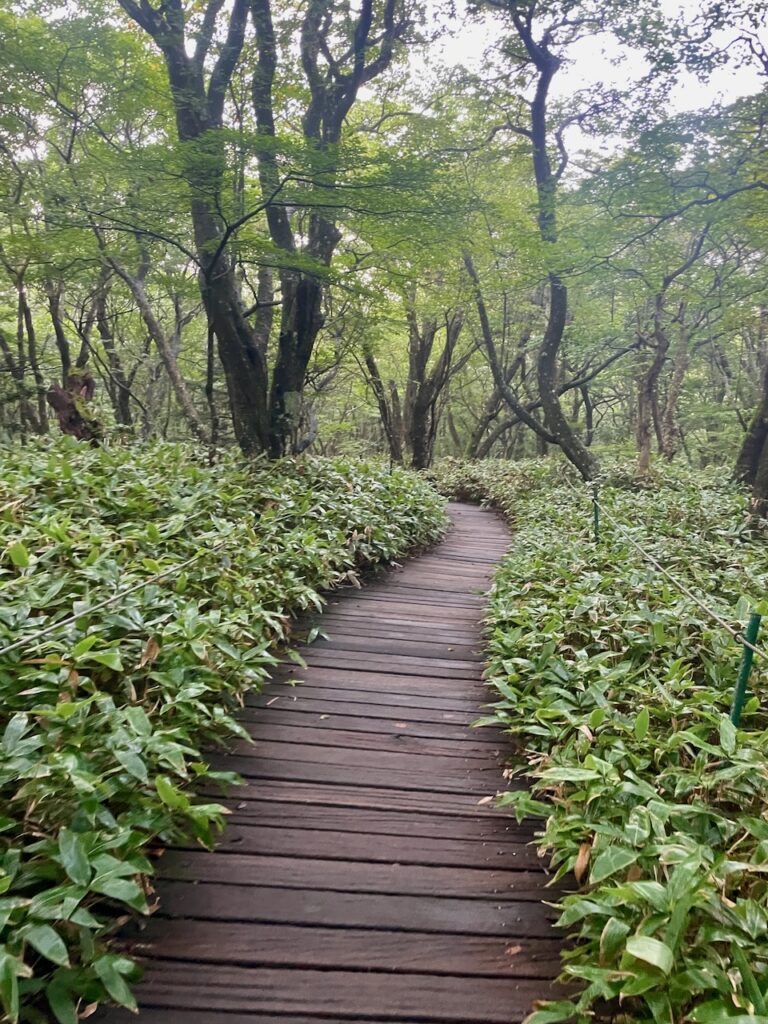
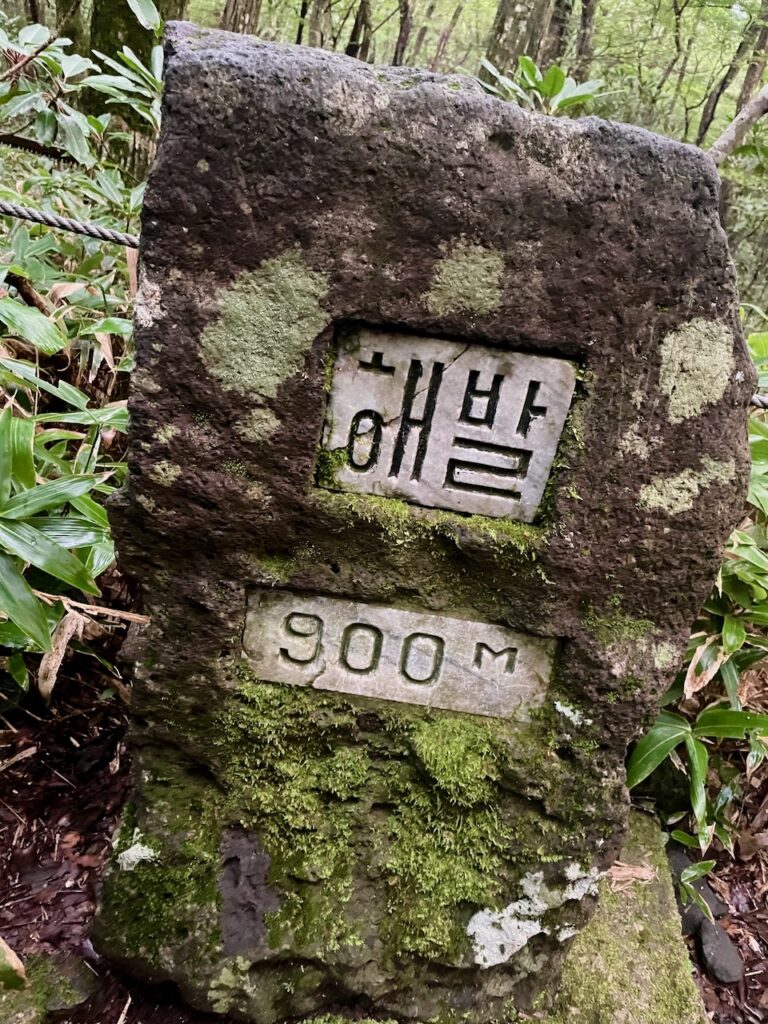
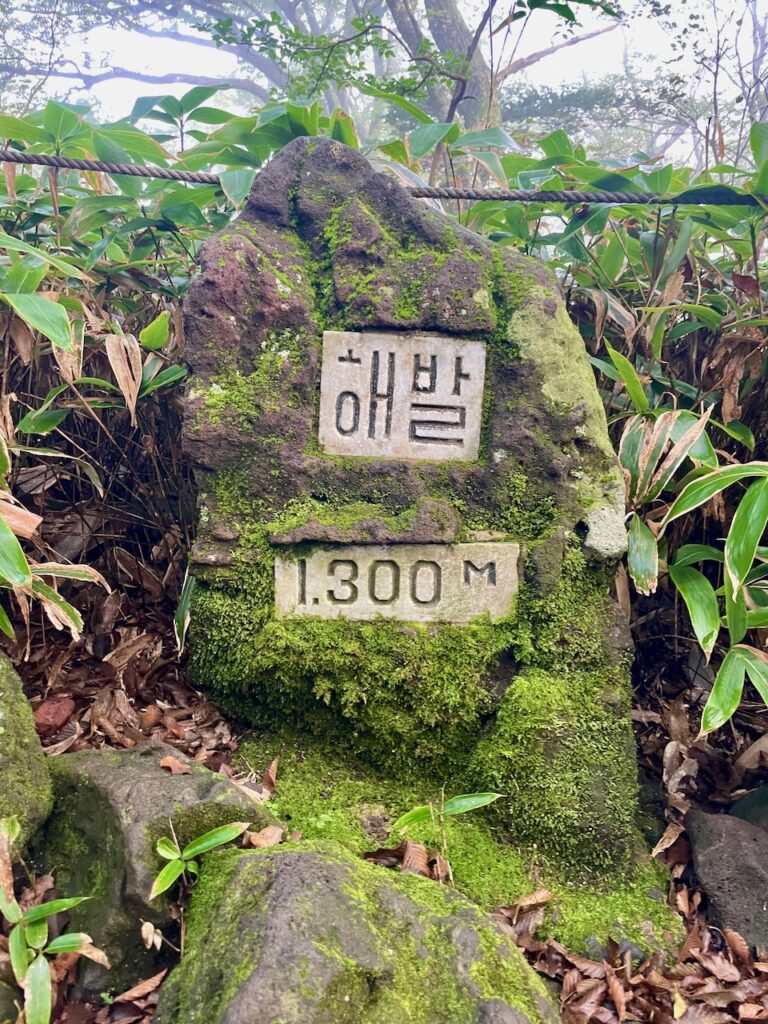
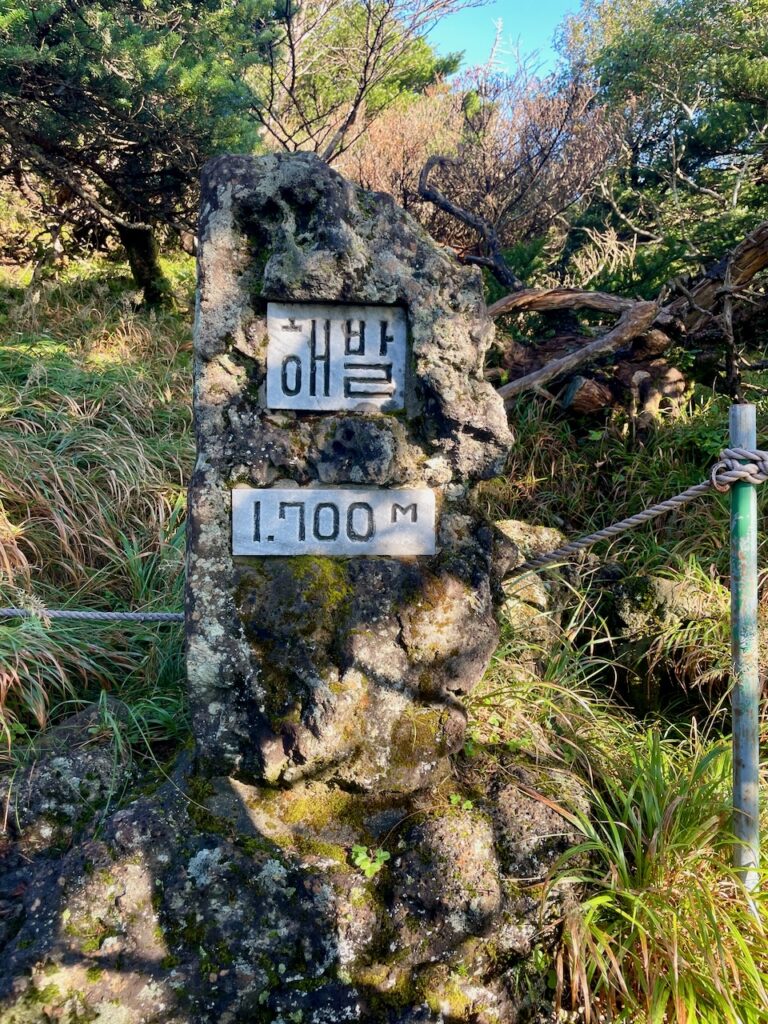
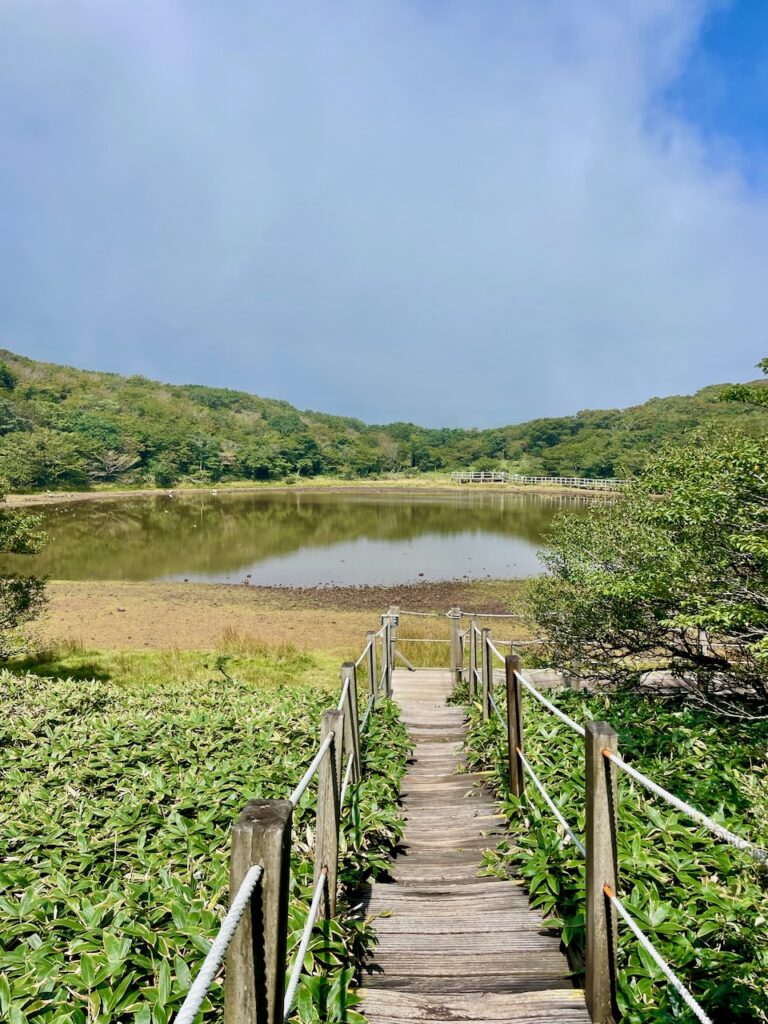
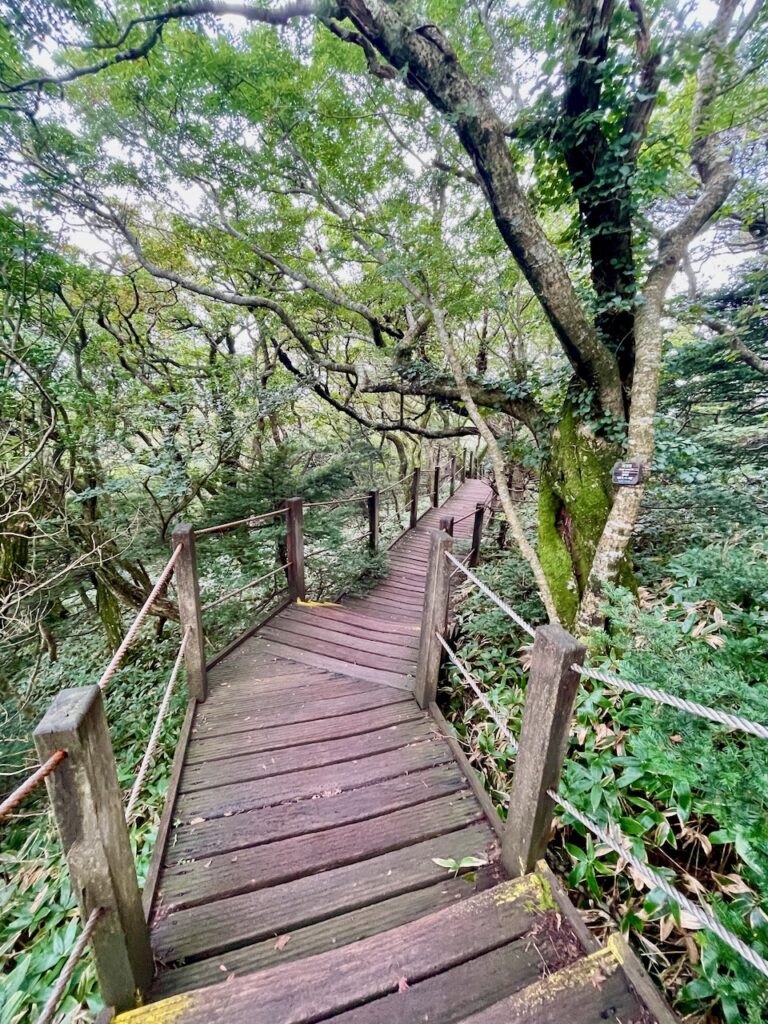
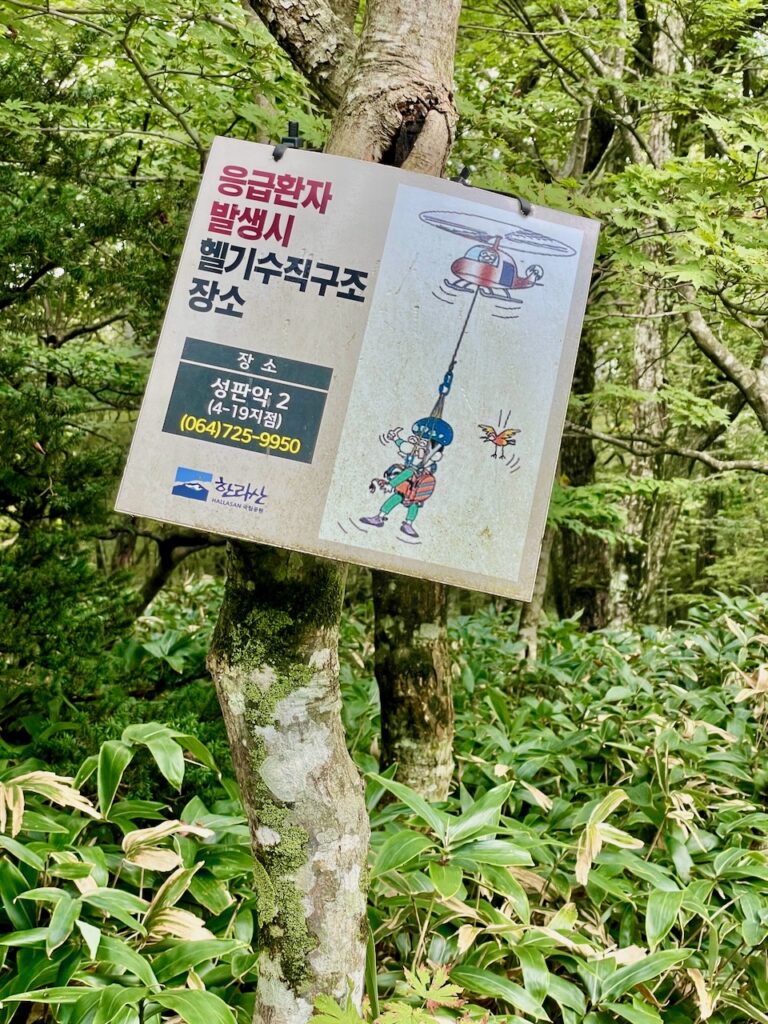
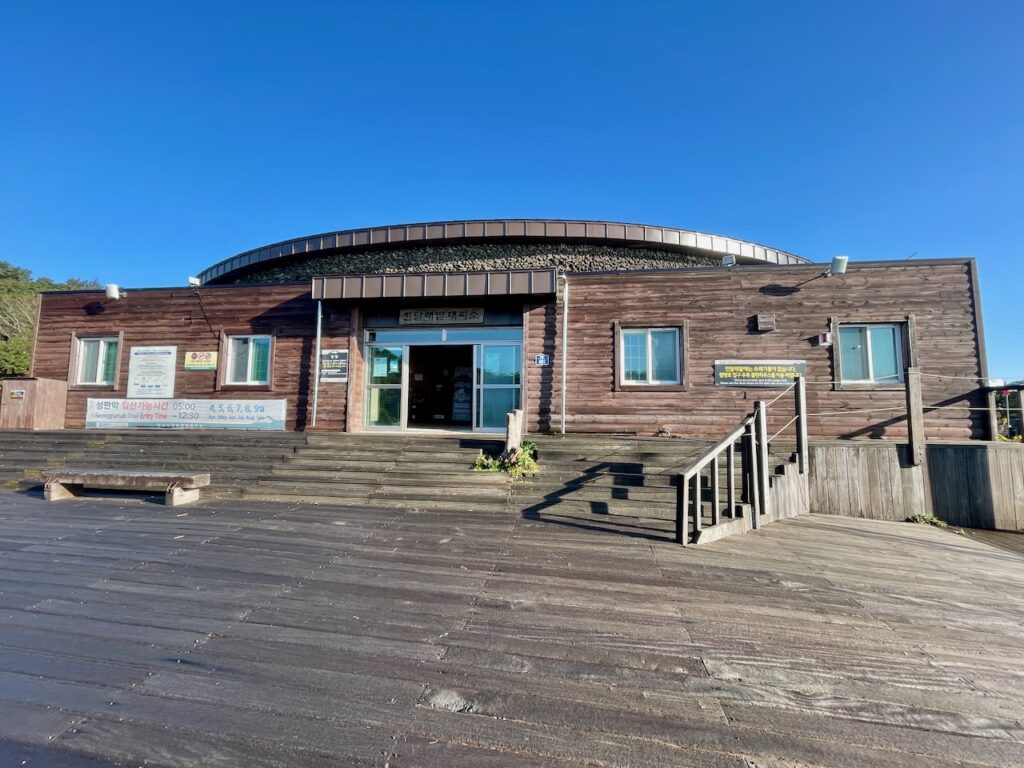
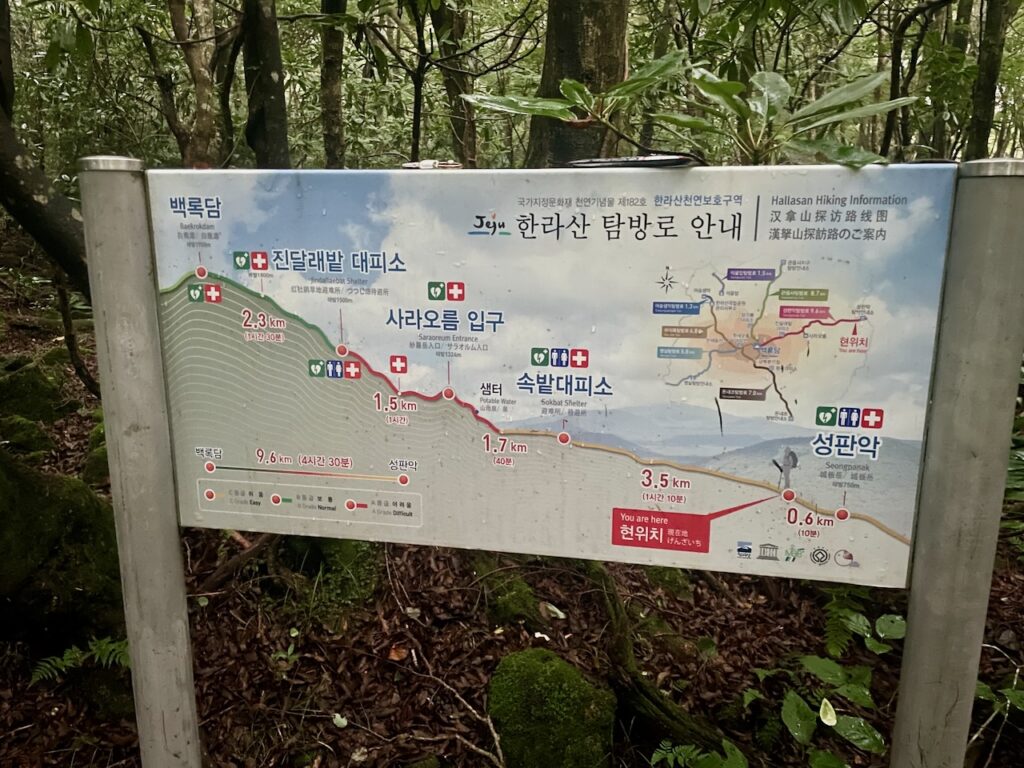
The best time to hike is from spring to autumn, starting early in the morning (6:00-7:00 AM) to complete the hike way before lunch time. If you’re driving from Jeju City, take Route 1132 to the Seongpanak or Gwaneumsa trailheads, about a 25-30 minute drive. The Seongpanak Trail (9.6 km) is moderate and takes about 4 hours. The Gwaneumsa Trail (8.7 km) is longer and more challenging, taking around 5 hours, while Eorimok and Yeongsil are shorter, easier options.
Wear comfortable hiking shoes and pack water, snacks, sunscreen, and a jacket. Hallasan’s weather can change quickly, so check forecasts before you go. The trails are mostly well-maintained, but terrain can be rocky / slippery, especially as you near the summit.
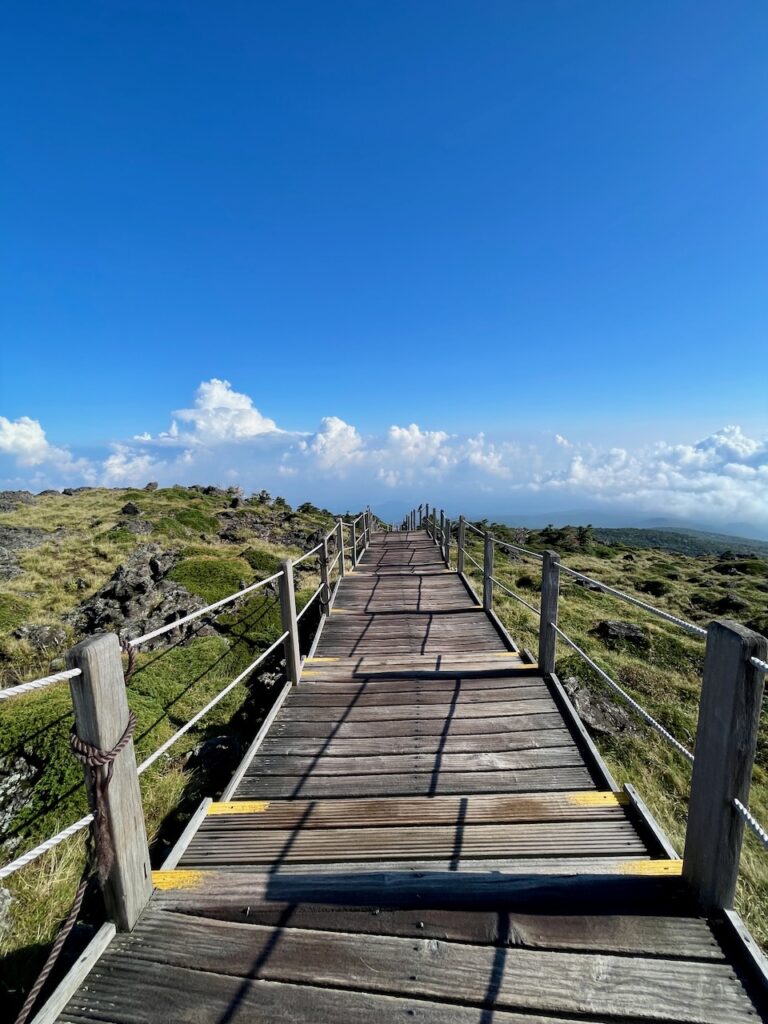
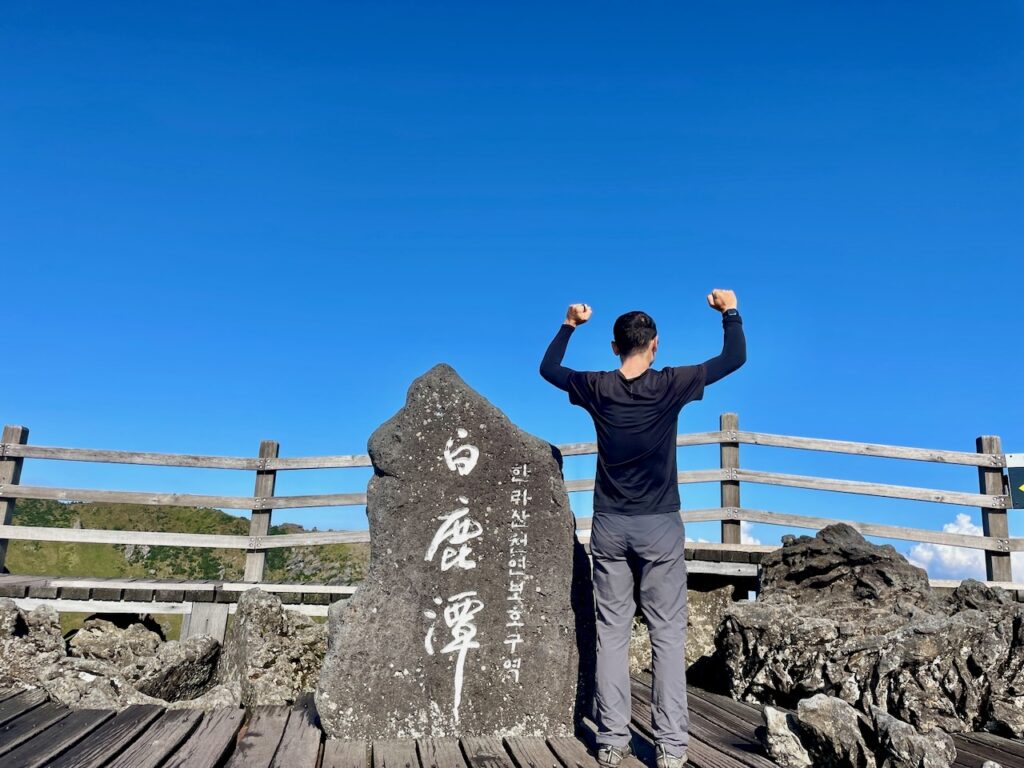
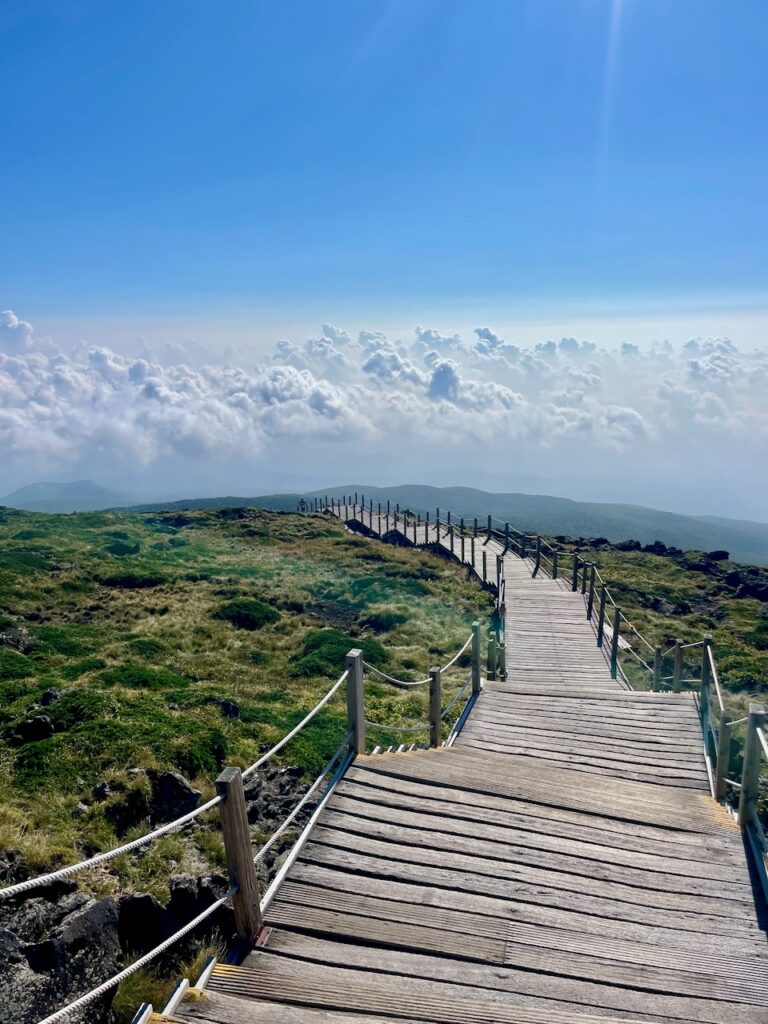
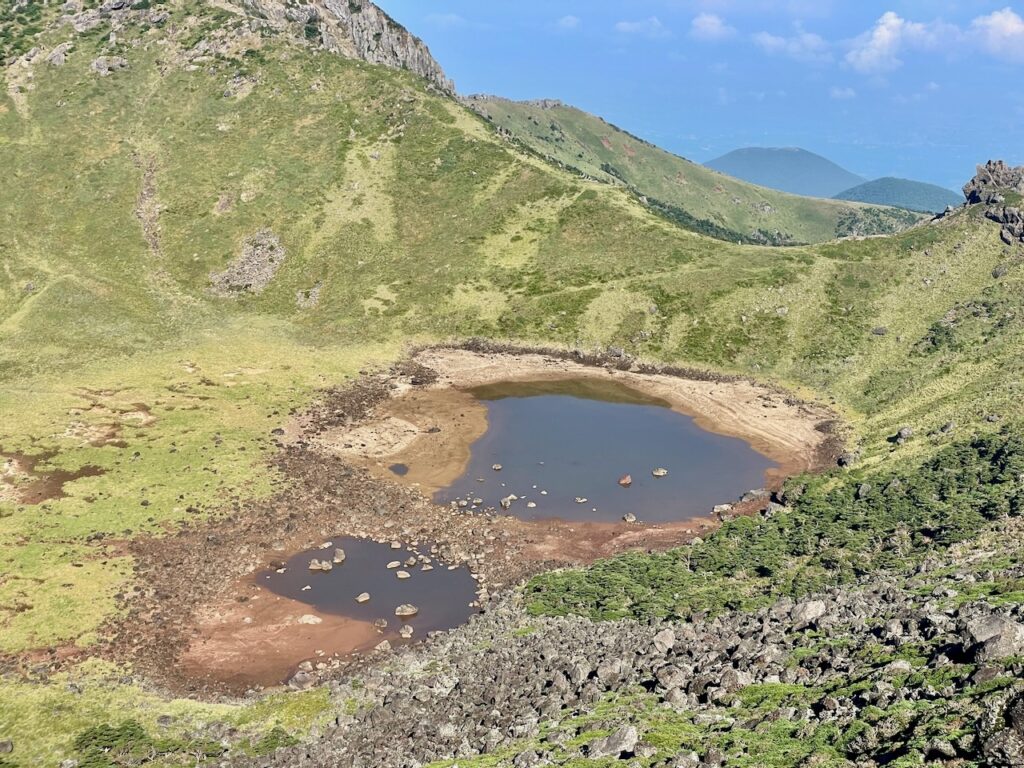
Also keep in mind that you must apply for a permit in order to access the trail. We’ve found this guide quite resourceful to help you with the registration process.
For our final dinner on Jeju, we visited 중섭이네식당 (see our map), a delightful spot known for its bibimbap. It was not only our last meal on the island but also one of our absolute favorites. This cozy restaurant fills up quickly, so be sure to arrive early to snag a table—you won’t want to miss this gem!
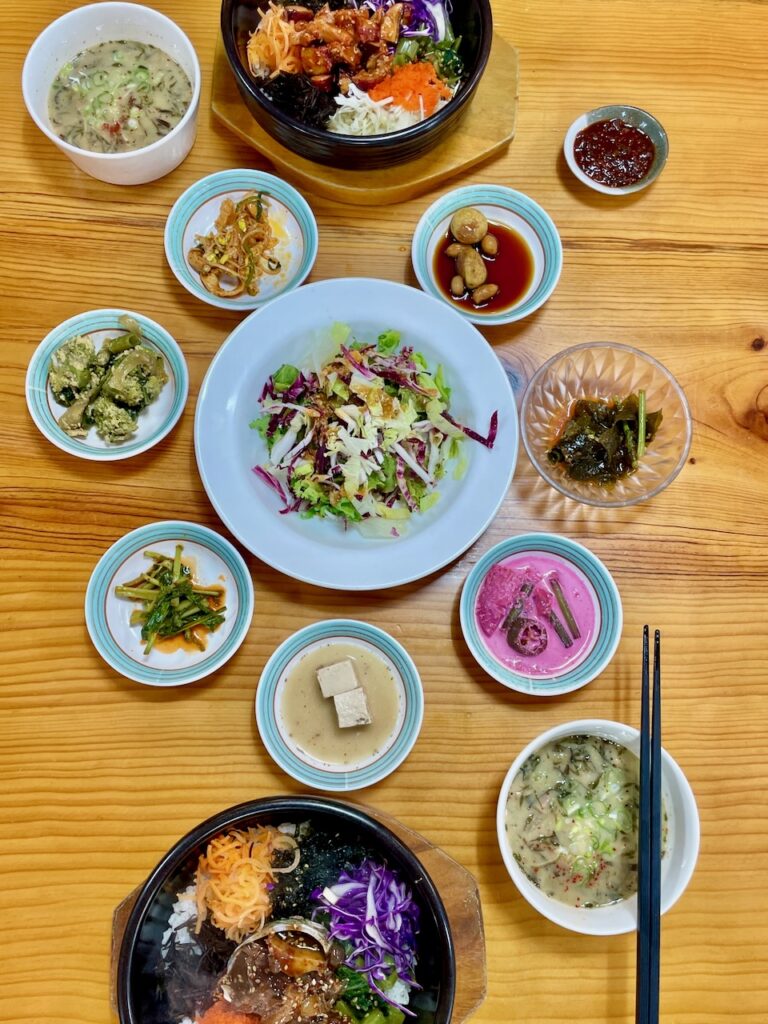
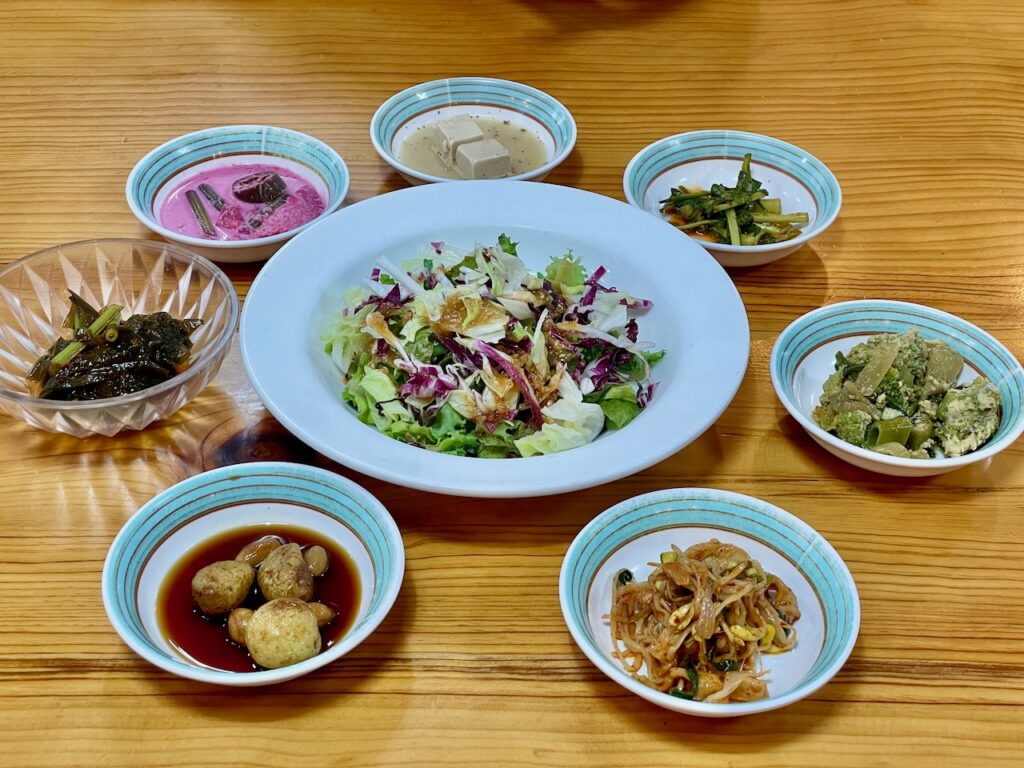
Where to stay in Jeju Island
There are plenty of places to stay that are really affordable on the island. We suggest either Jeju City if you want to be centrally located, or staying near the coast if you want to be in on a more remote place.
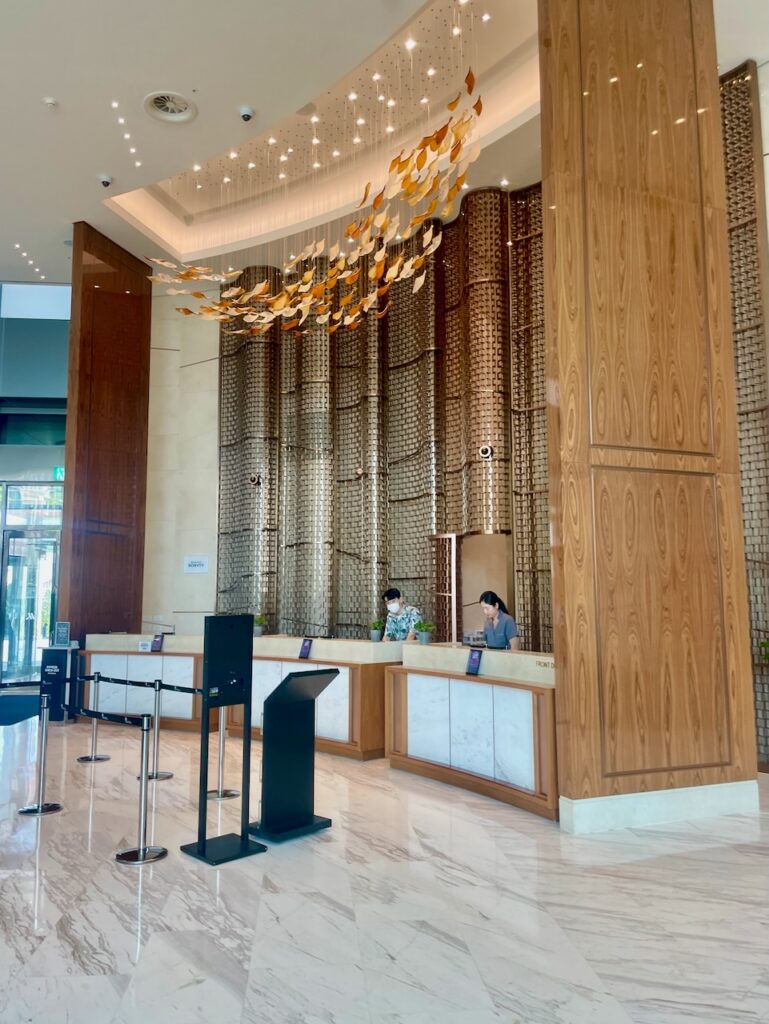
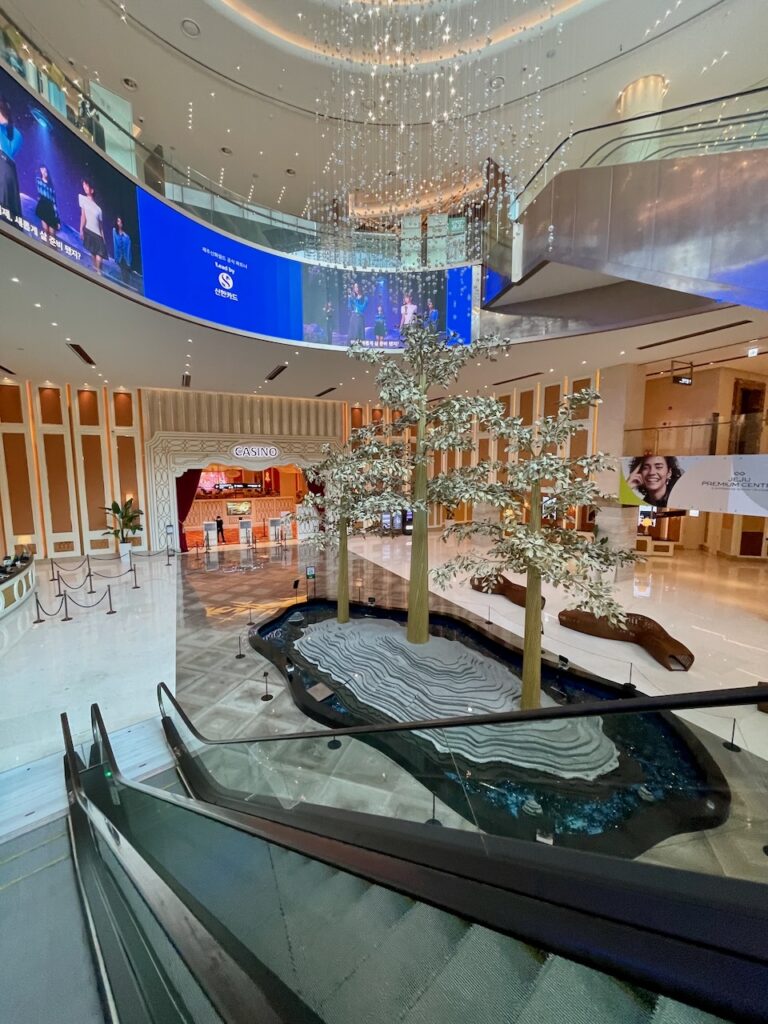
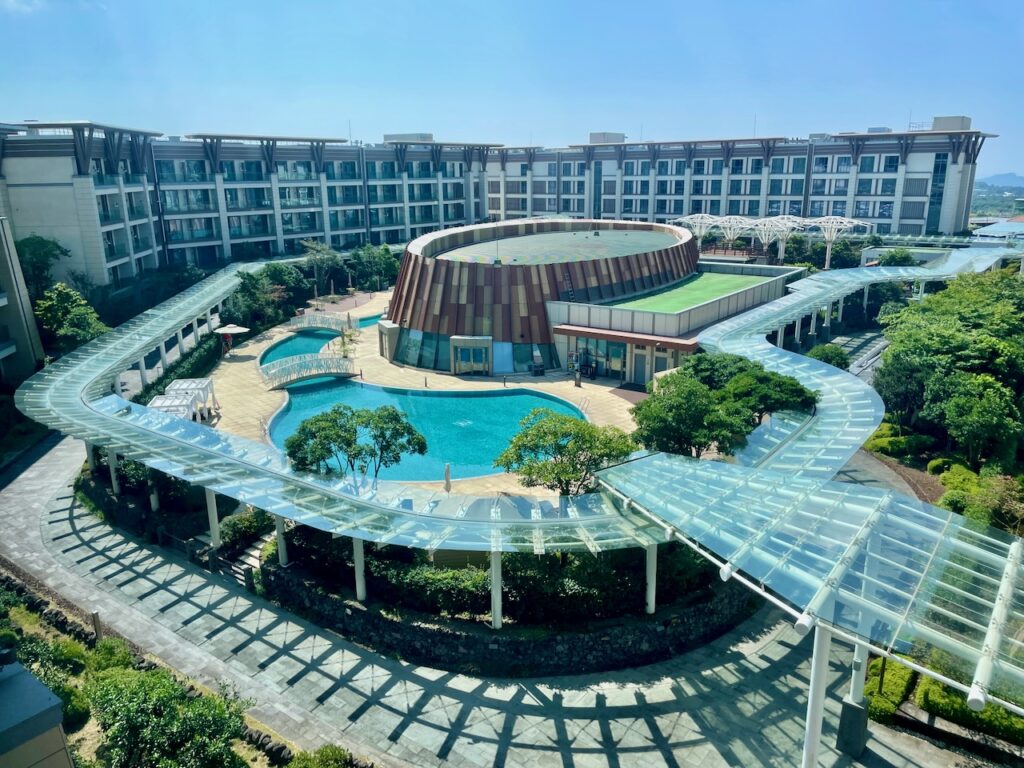
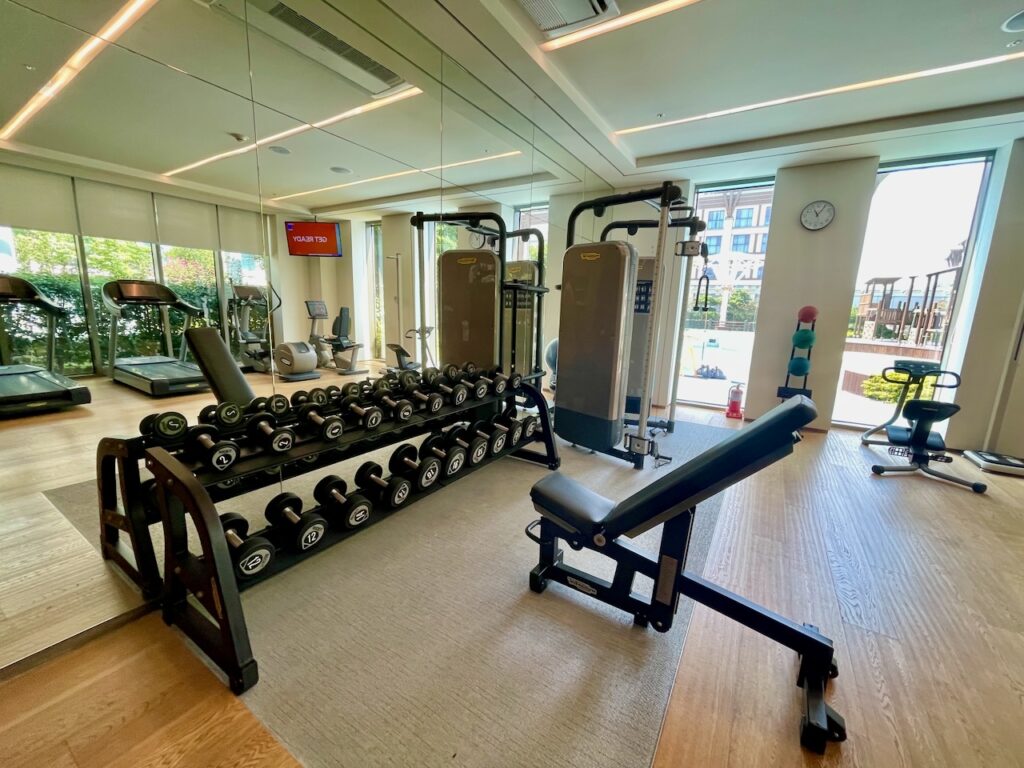
We decided to stay at the Marriott, using points, for a nice getaway experience. Since we rented a car, it was not an issue for us to get around.
If you want more options, we found that Boreum Pension and Sungsan Woori House Pension are really affordable options. You can also explore other options using the search box below:
How to get to Jeju Island
To reach Jeju Island, there are two options:
- By Plane: This is the fastest option, with flights from Seoul, Busan, and Incheon to Jeju taking about 1 hour. Multiple daily flights available from major airlines like Korean Air, Asiana, and Jeju Air.
- By Ferry: Offers a scenic journey from cities like Busan, taking 4-7 hours. Offers both passenger-only and car-carrying ferries for a more relaxed, picturesque trip.
We were able to get a direct flight to Jeju from Taipei, Taiwan.
Cost of our 5 day trip in Jeju Island
Our stay on Jeju Island was very affordable – although we paid for our hotel using reward points, adding accommodation would probably only be an additional $250-400 depending on your preference.
TL;DR; As a couple we spent a total of 457 USD for this island getaway.
Note: this budget is as a couple so if you travel solo, your budget might differ.
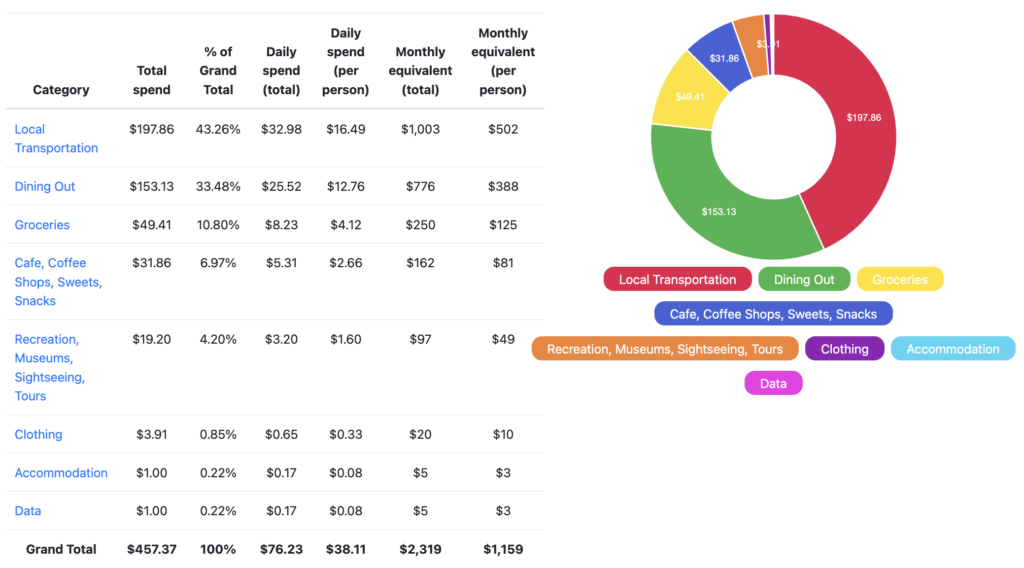
Are you wondering where this nice data is coming from? Well we created an app for that: Nomad Purse. Nomad Purse is the ultimate budget tracking app for slow, fast or long-term travelers like us! With Nomad Purse, you can easily keep track of your expenses and stay within budget, all in one convenient place. Learn more and start streamlining your budget today by visiting https://www.nomadpurse.com.
Here is our budget breakdown per spending category from the largest to the smallest:
| Category | Total Cost USD | Comments |
| Local Transportation | $197.86 | This include cost for the car rental, gas and parking fees. |
| Dining Out | $153.13 | Our lunches and dinners on the island |
| Groceries | $49.41 | Lots of tangerines from Jeju island along with some tea from the tea museum |
| Snacks | $31.86 | Snacks at various cafes on the island along with some ice creams at the convenience stores |
| Recreational Activities | $19.20 | Entrance fees for the various parks we visited |
| Clothing | $3.91 | Bought protective sleeves to hike on the island |
| Data | $1 | Phone data plan using one of our favorite data providers: Eskimo |
| Accommodation | FREE | We used rewards points to stay at the Jeju Shinhwa World Marriott Resort |
| TOTAL | $457.37 |
Tips for Visiting Jeju Island
- Best Time to Visit: The best time to visit Jeju Island is during spring (April to May) for mild weather and the island’s stunning flower blooms, especially the tangerine blossoms. Autumn (September to November) is another ideal period, as the cooler temperatures and vibrant foliage make it perfect for outdoor activities like hiking. Summer (June to August) is great for beach lovers, though it can be crowded and hot.
- Book Your Accommodation Early: Jeju attracts a lot of tourists, particularly during the summer months and Korean holidays such as Chuseok.
- Rent a Car: While public transportation exists, it isn’t convenient. Renting a vehicle at Jeju International Airport will give you the flexibility to visit remote areas.
- Don’t Miss the Local Delicacies: While Jeju’s natural beauty is a main draw, the island is also famous for its black pork, tangerines, and fresh seafood. Make sure to try local dishes like black pork barbecue, grilled mackerel, and jeonbokjuk (abalone porridge) during your stay.
Final Thoughts on our Itinerary in Jeju Island
Jeju Island is an enchanting destination with its stunning landscapes, rich culture, and delicious local food. Whether you’re hiking up Hallasan, exploring volcanic craters, or sampling Jeju’s famous black pork, you’ll find plenty to do.
If you are planning a trip to Korea, a stop in Jeju Island should be included in your itinerary. We recommend spending about 5 days on the island to fully experience its natural beauty and culture. With a rental car, you’ll have the freedom to explore all that Jeju has to offer. We would recommend watching a youtube video or documentary on the haenyeos of Jeju so you have more context on their rich culture. Don’t forget to savor the local delicacies and enjoy the relaxed pace of life on the island!
Would you consider Jeju Island? If you’ve been please let us know what your experience has been by leaving us a comment in the comments section below.
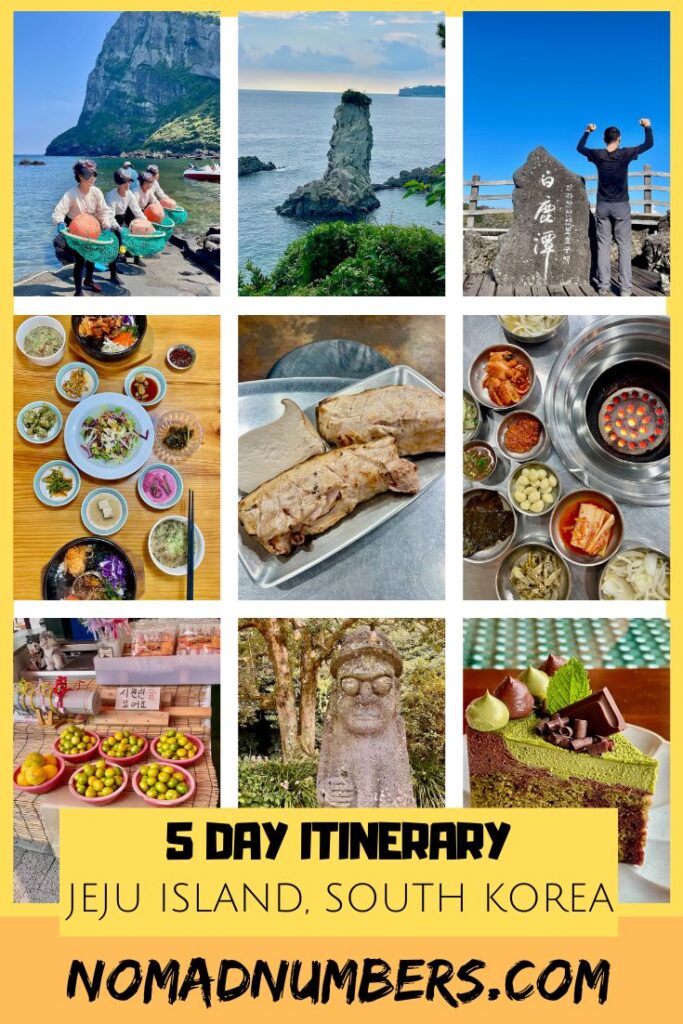



0 Comments